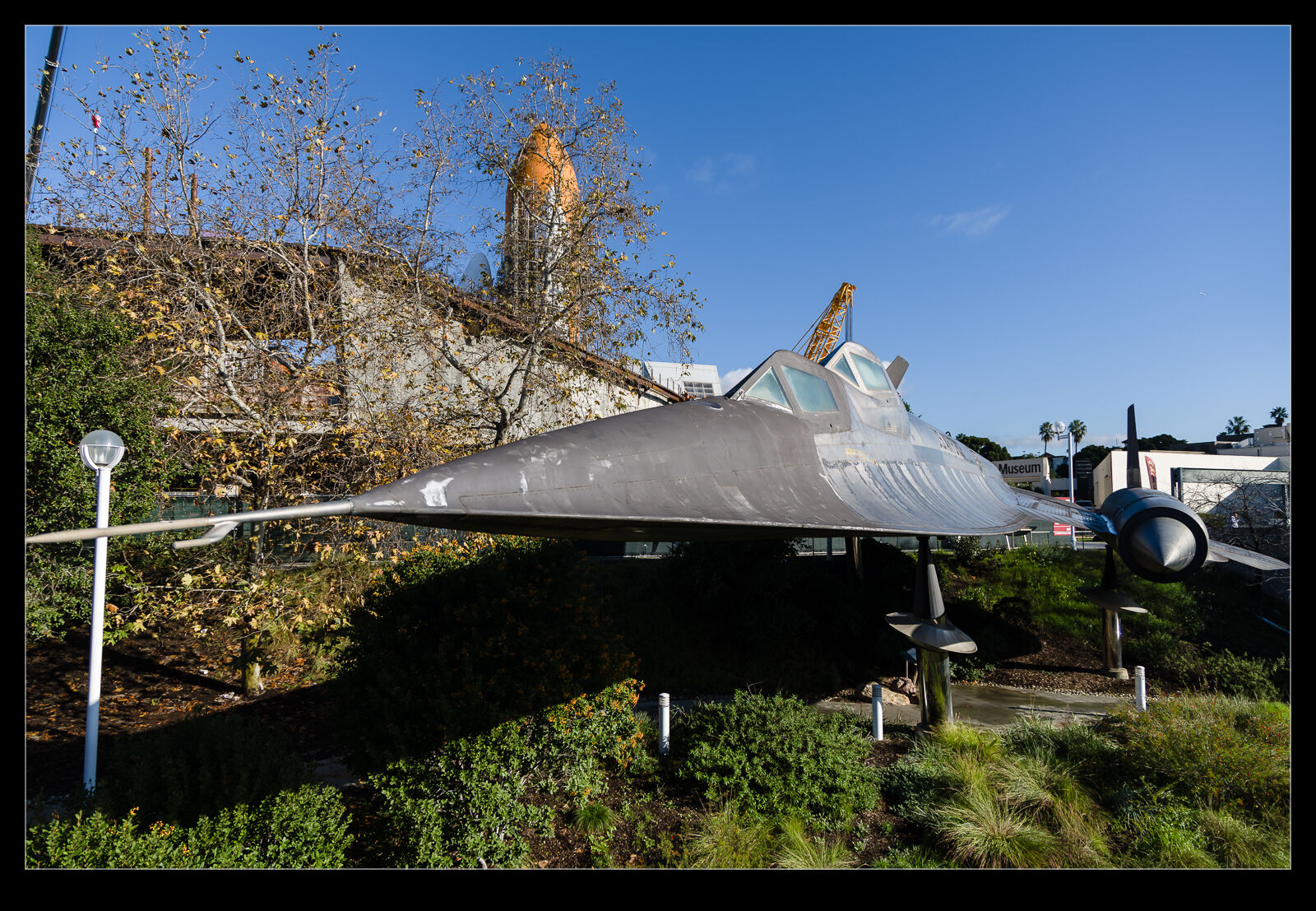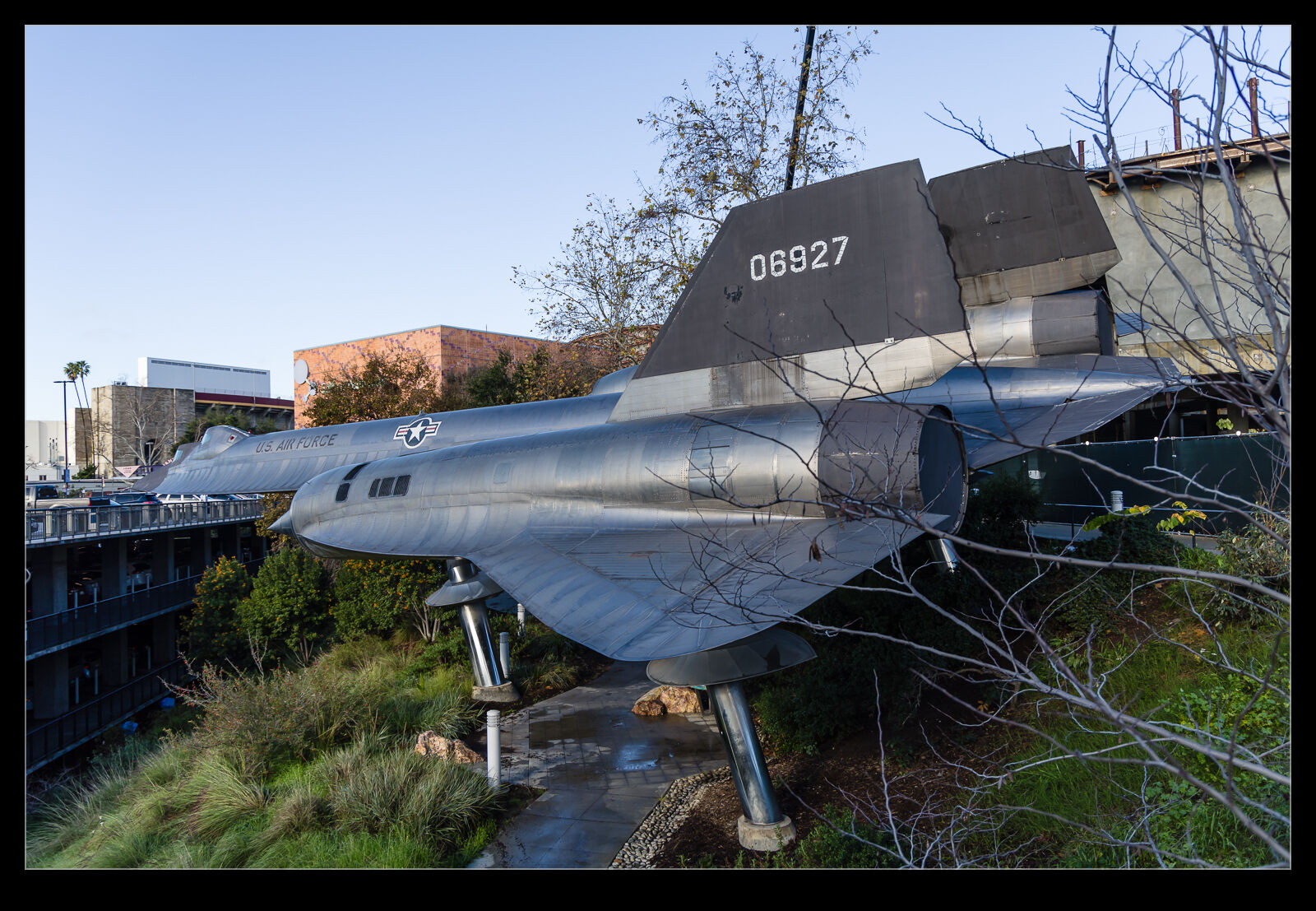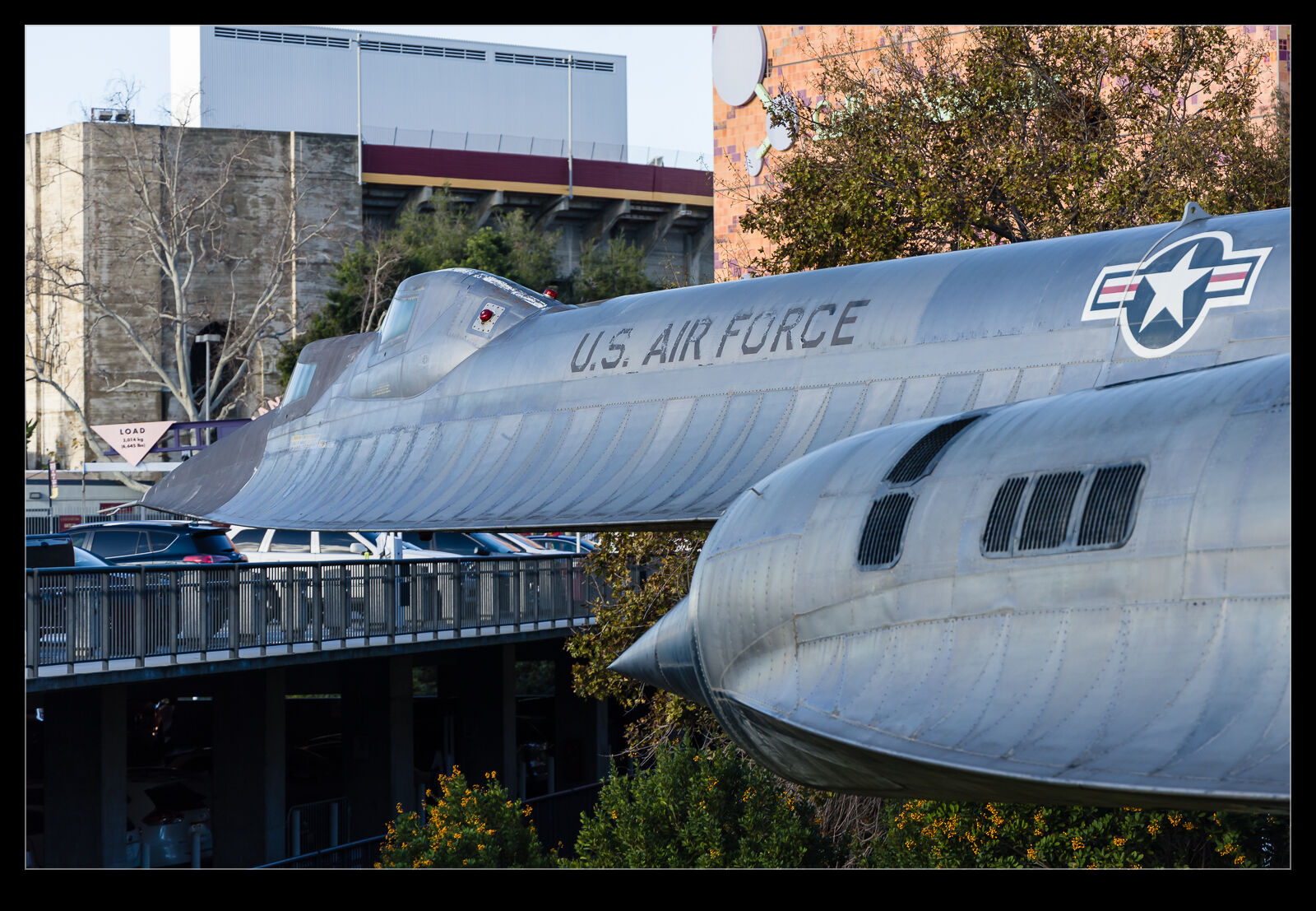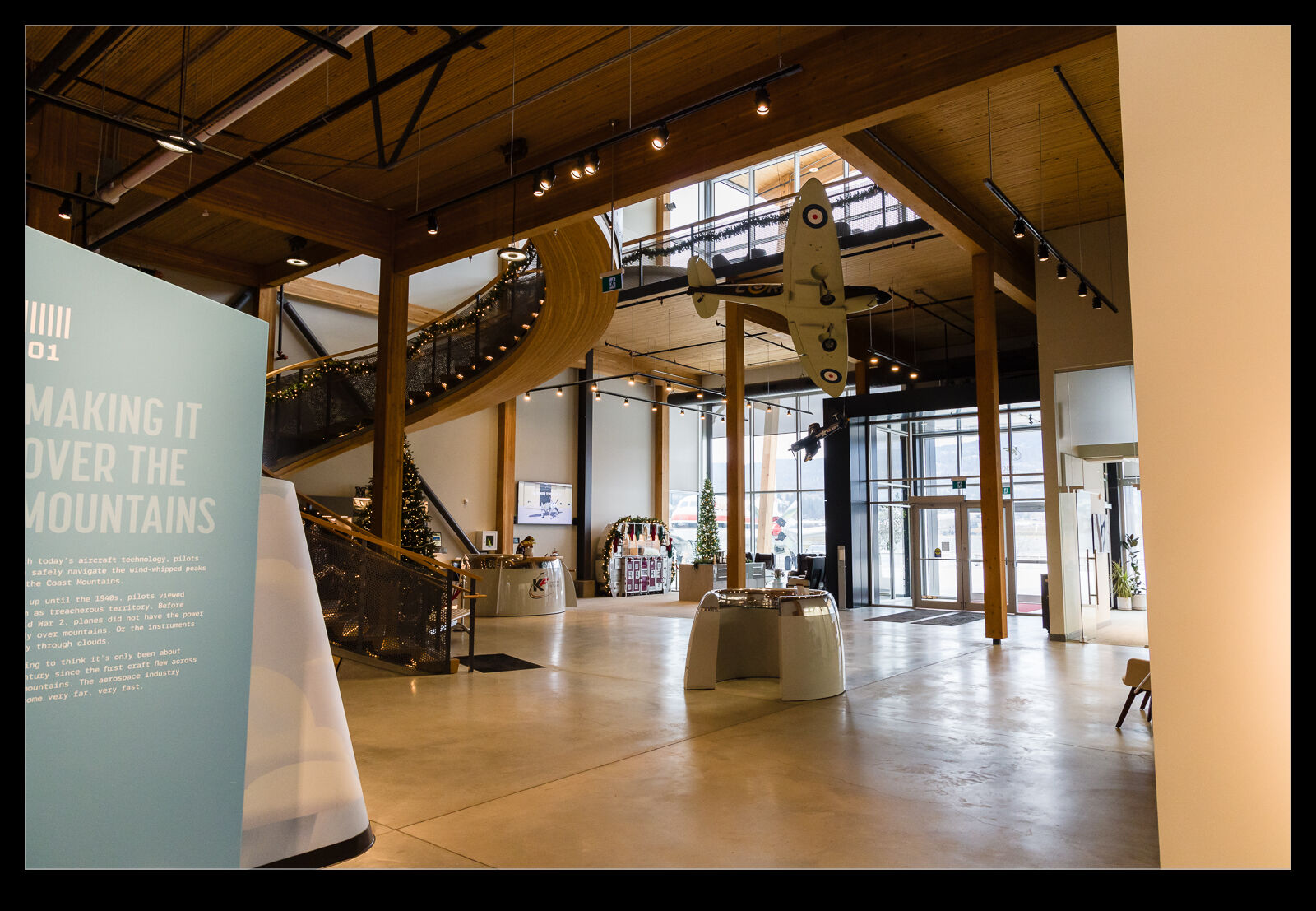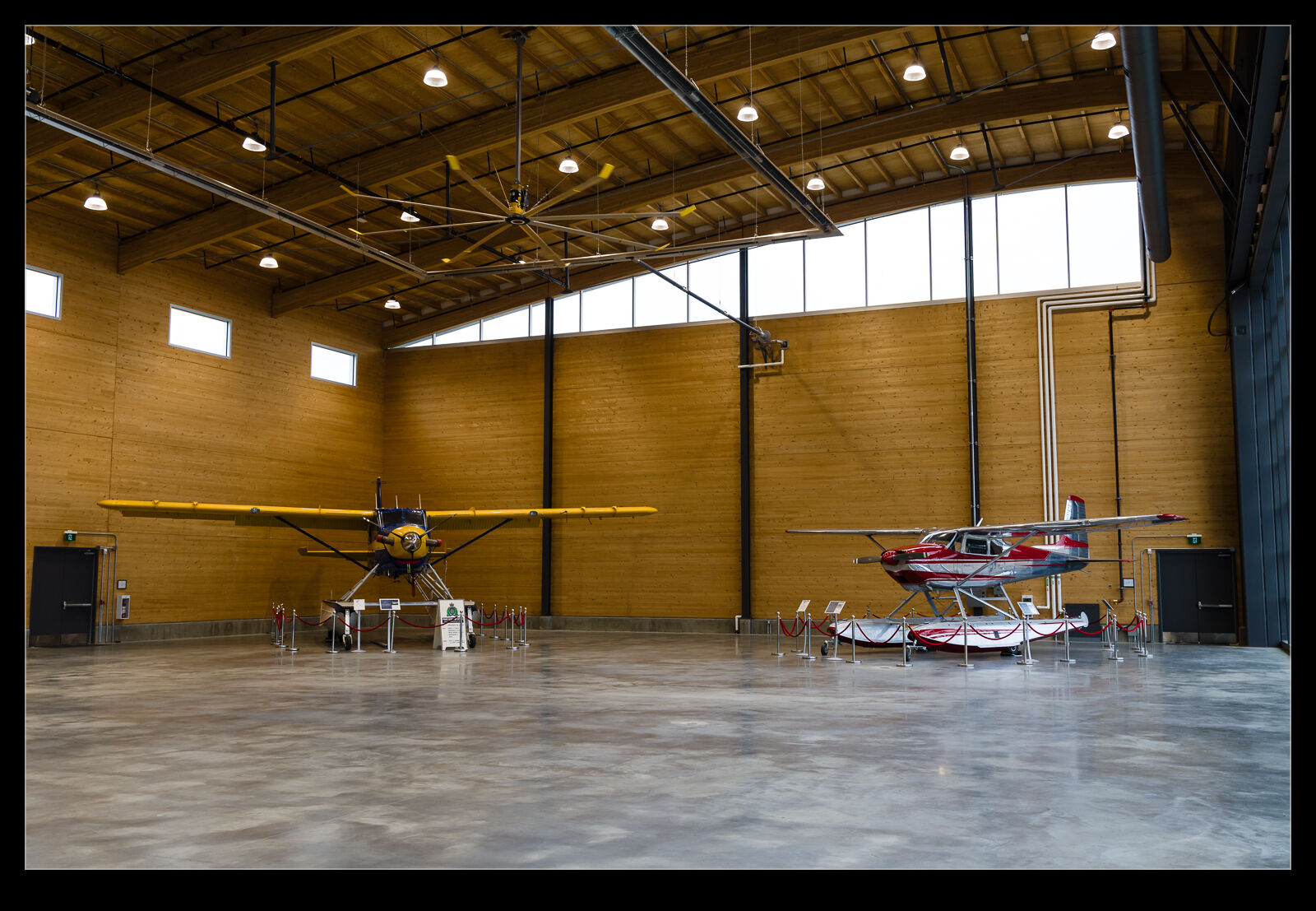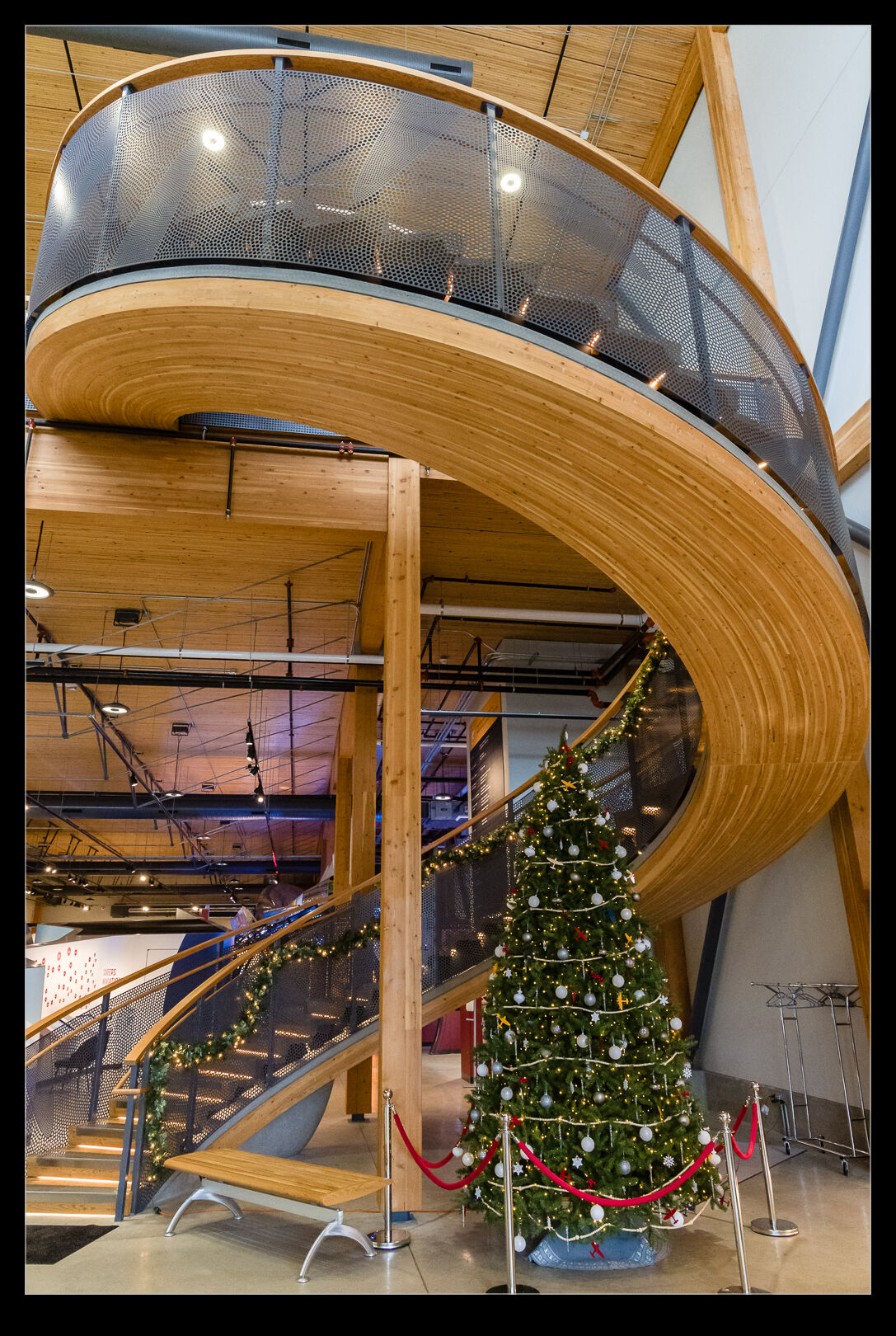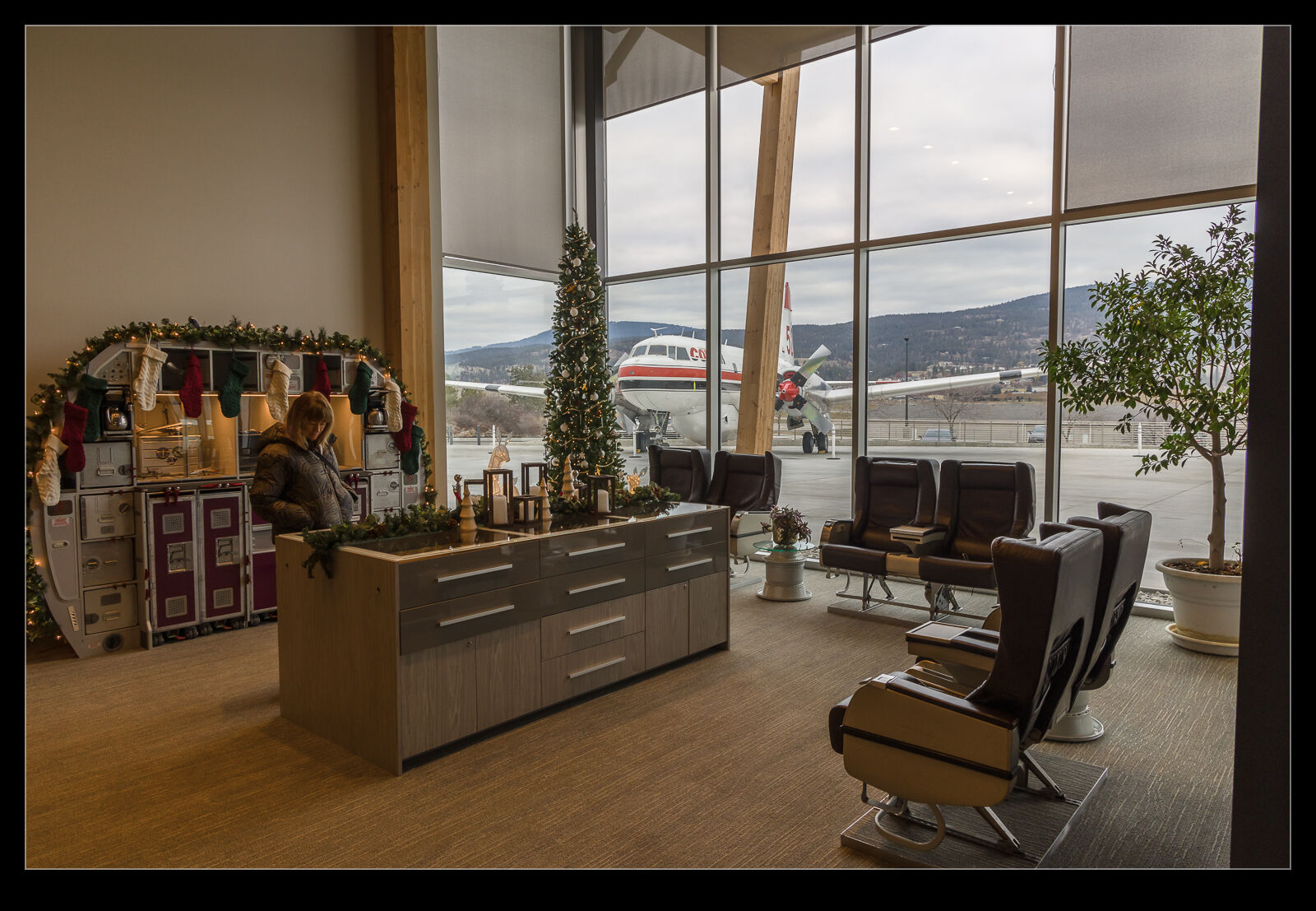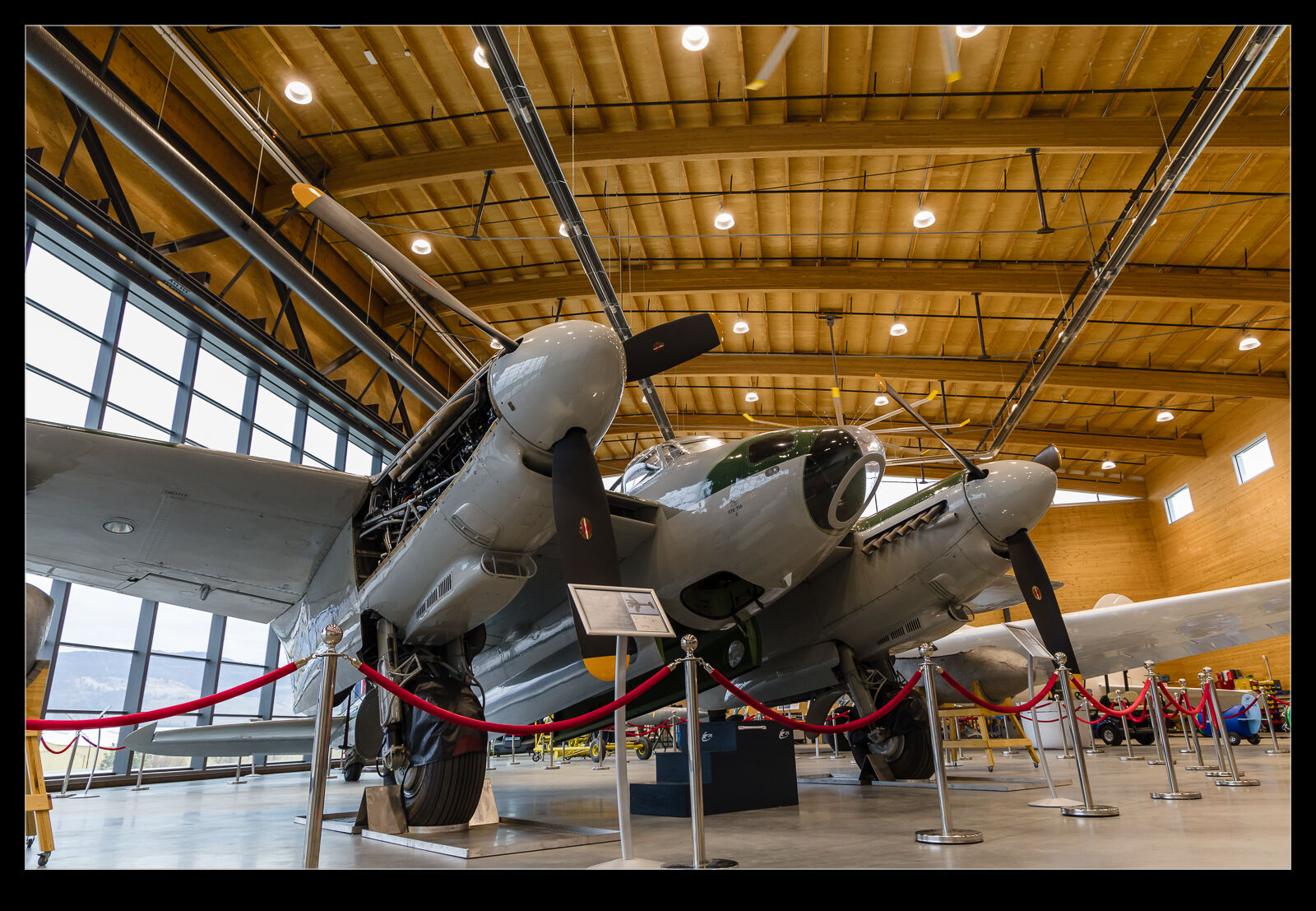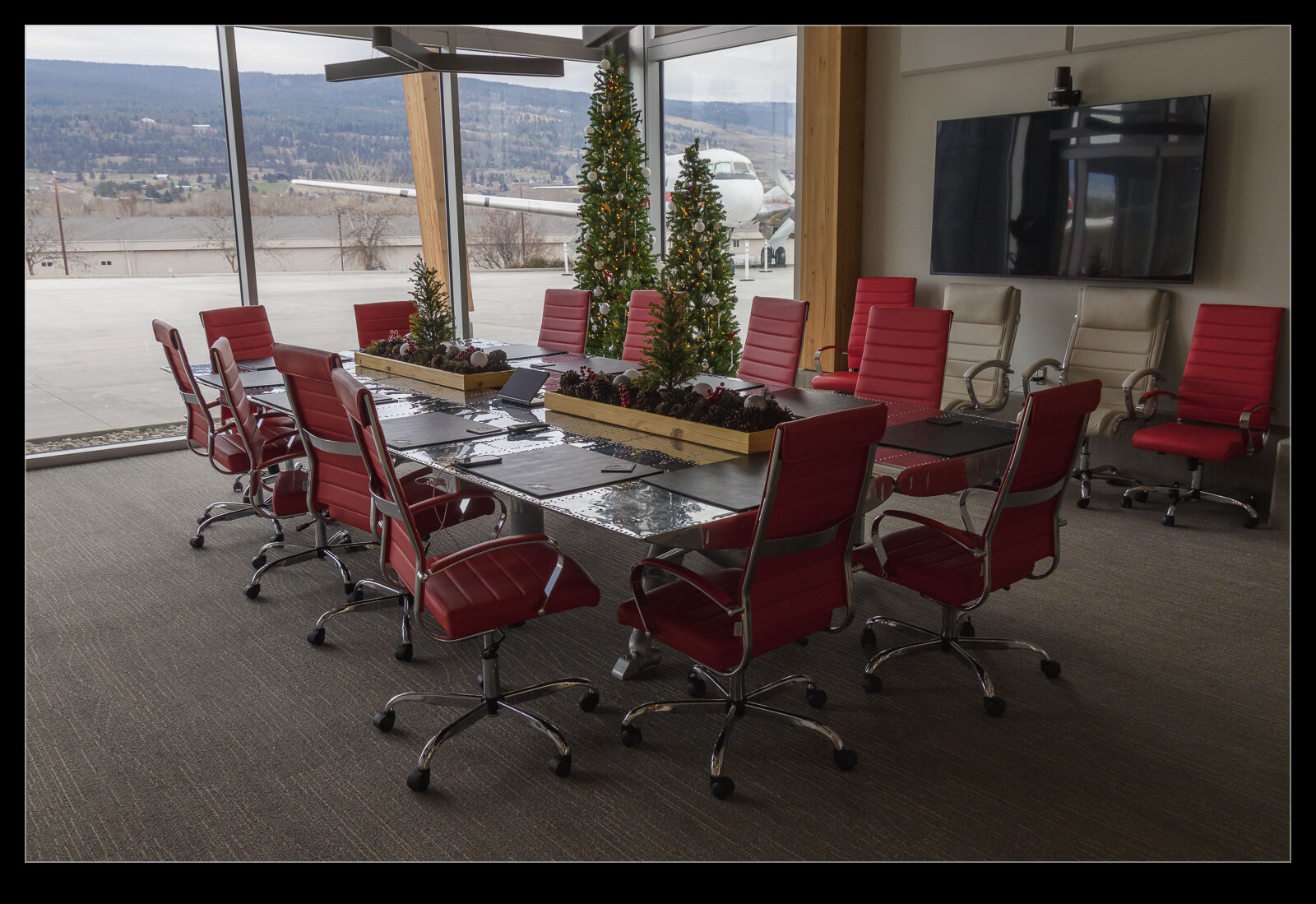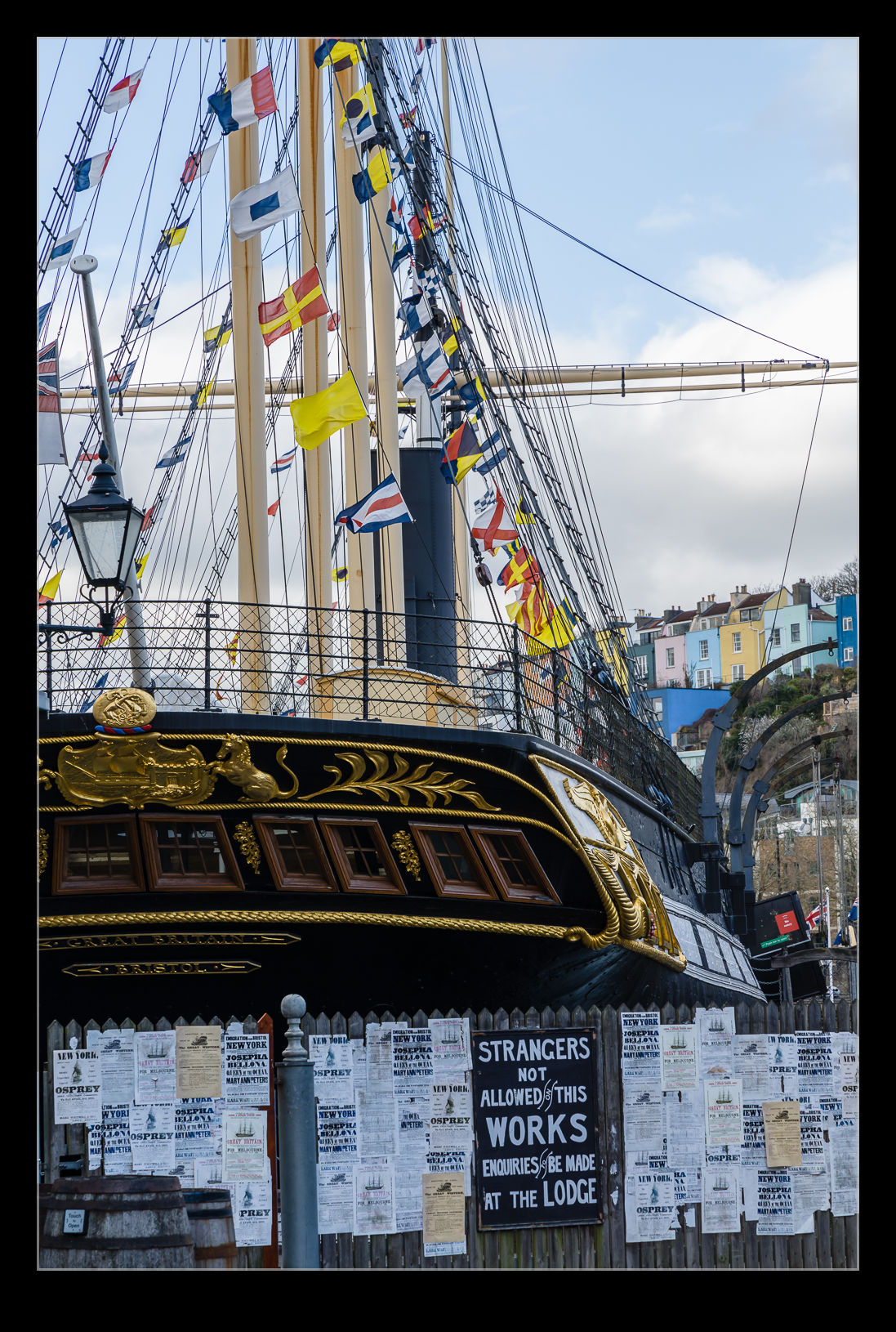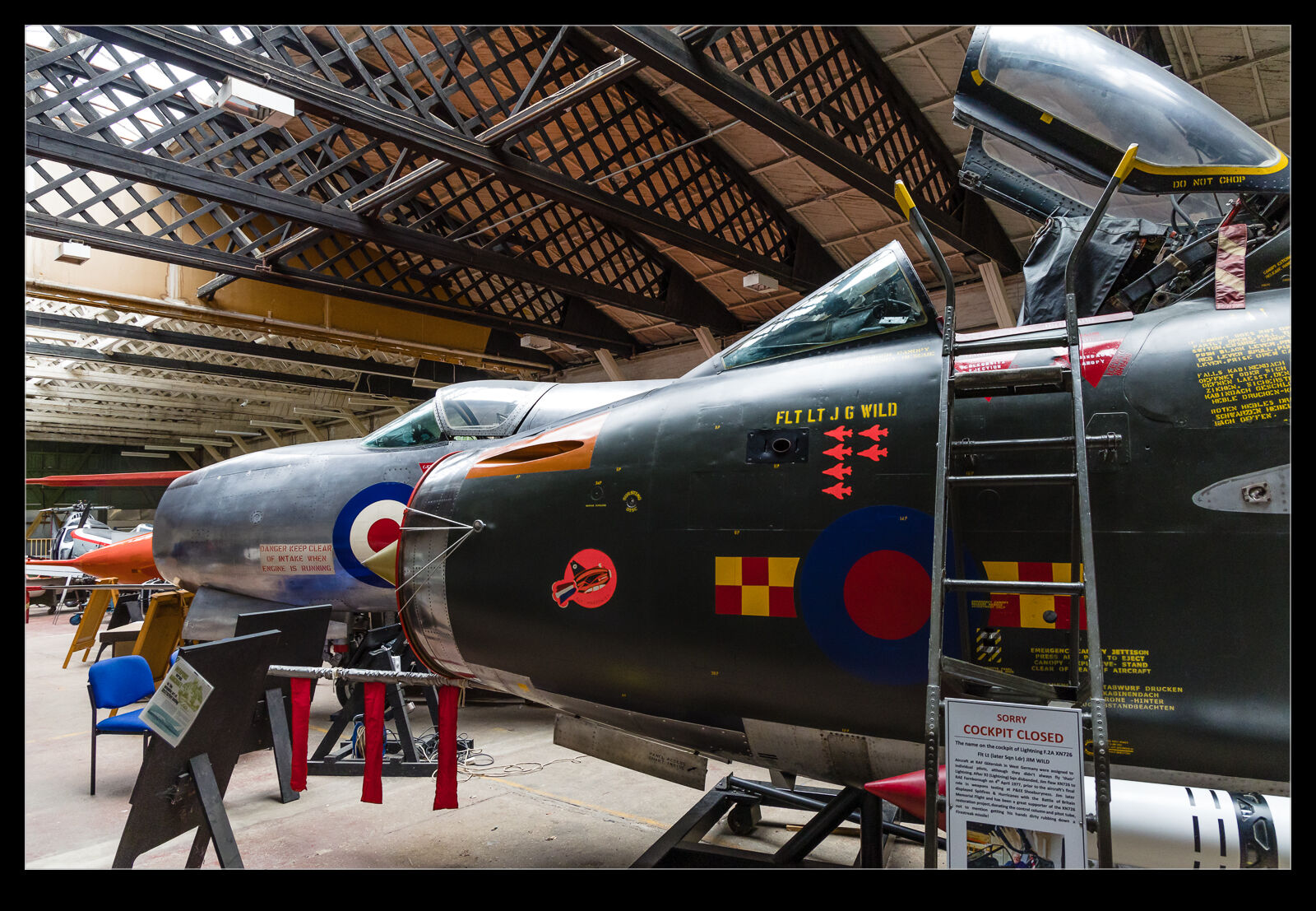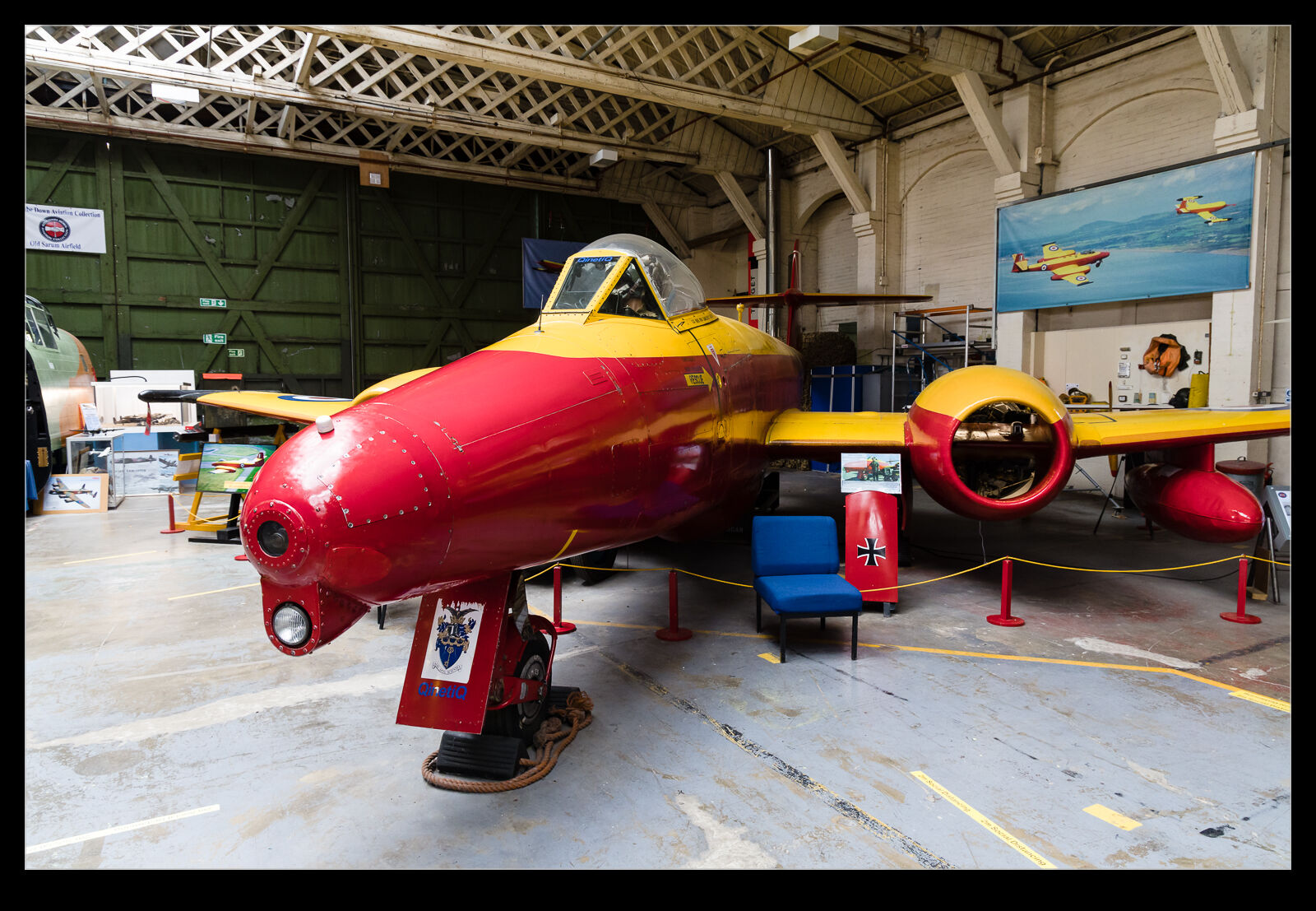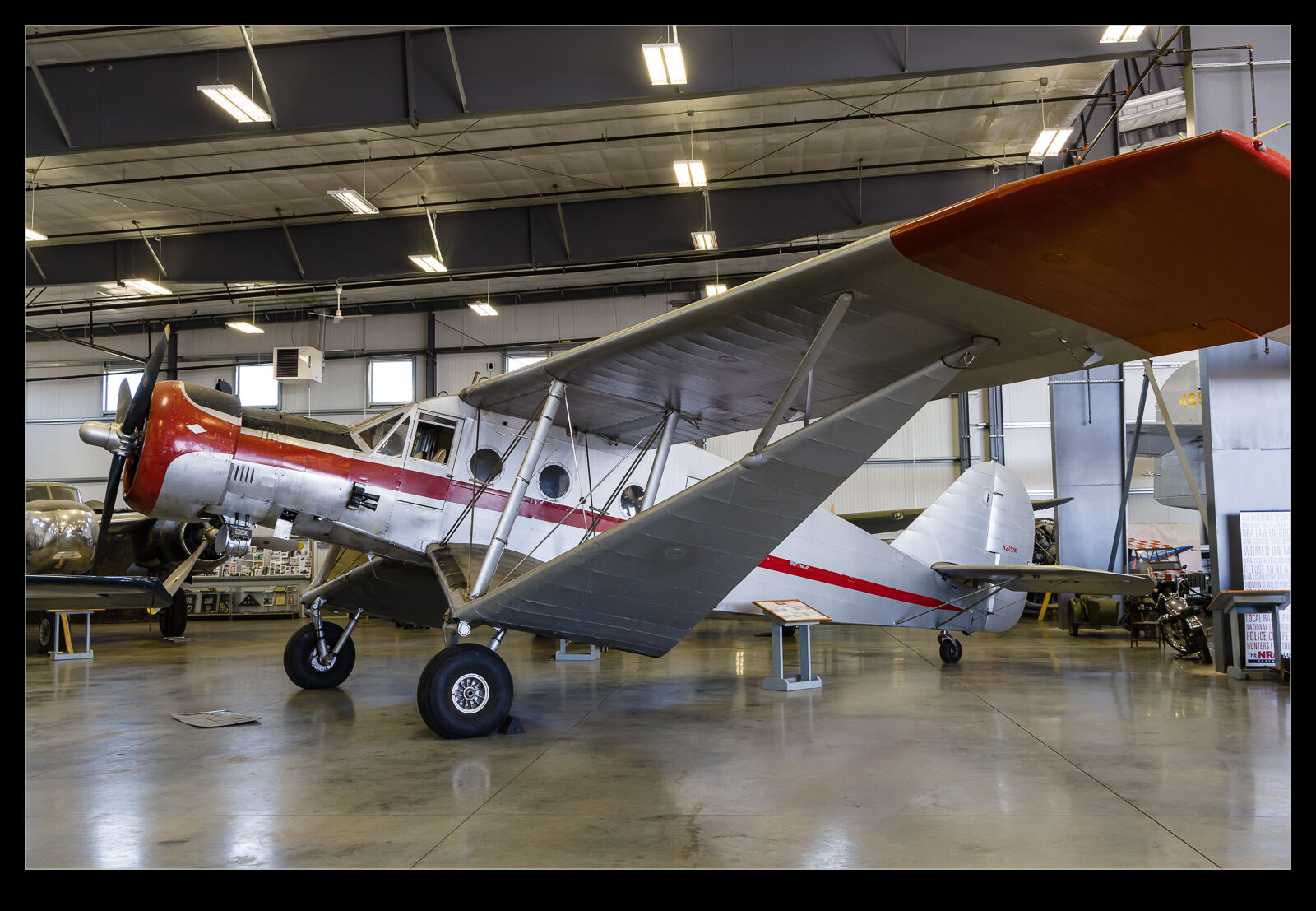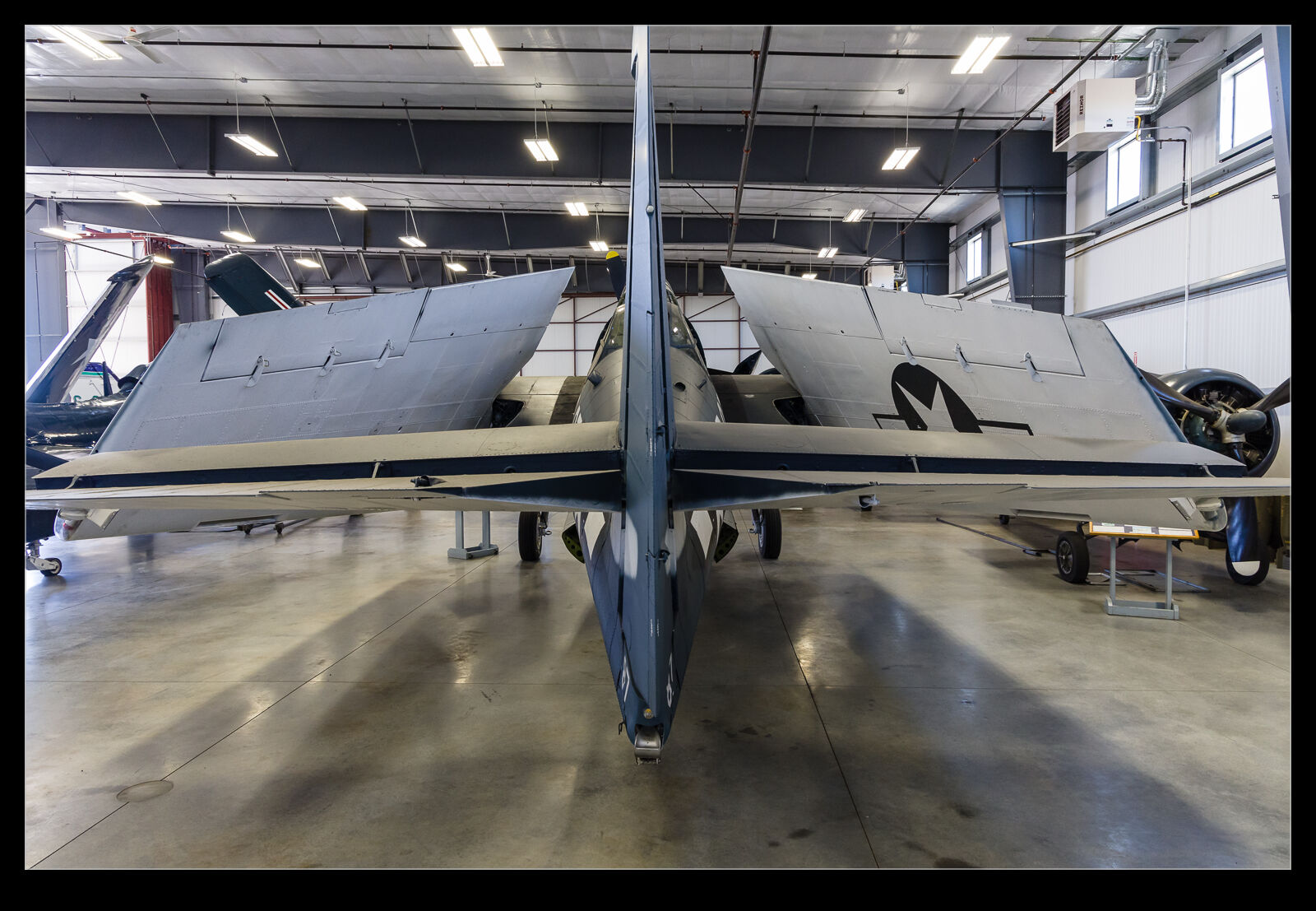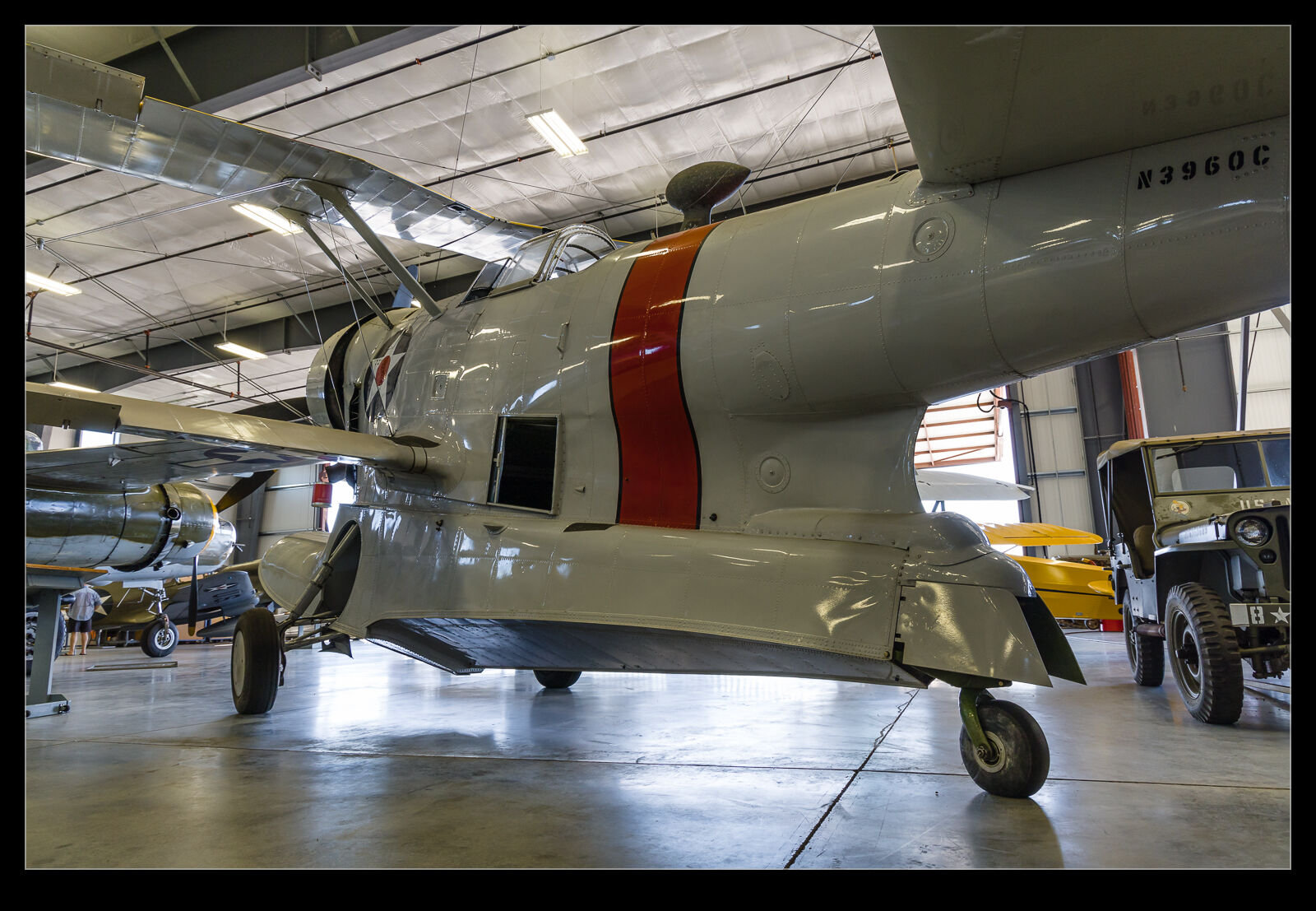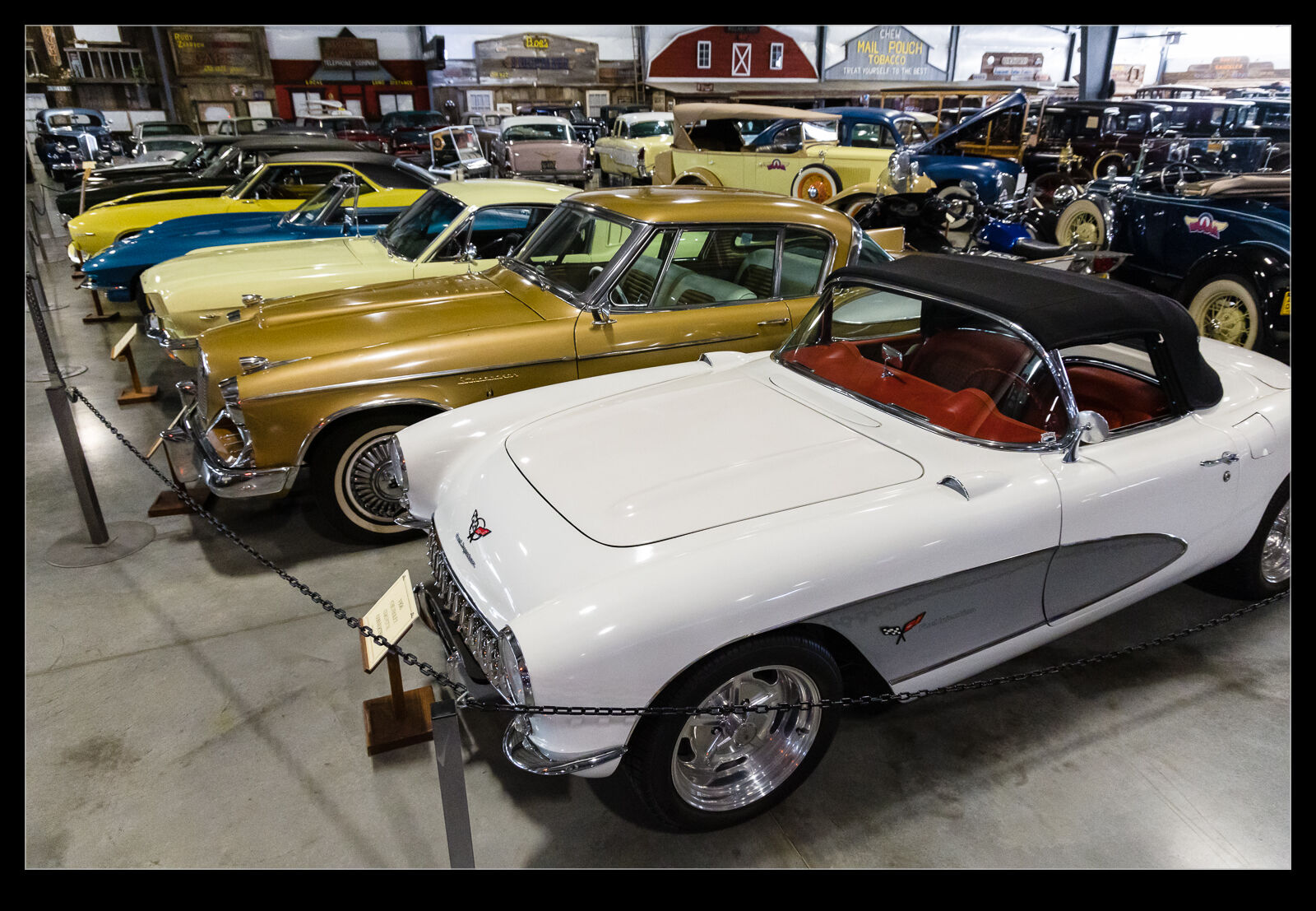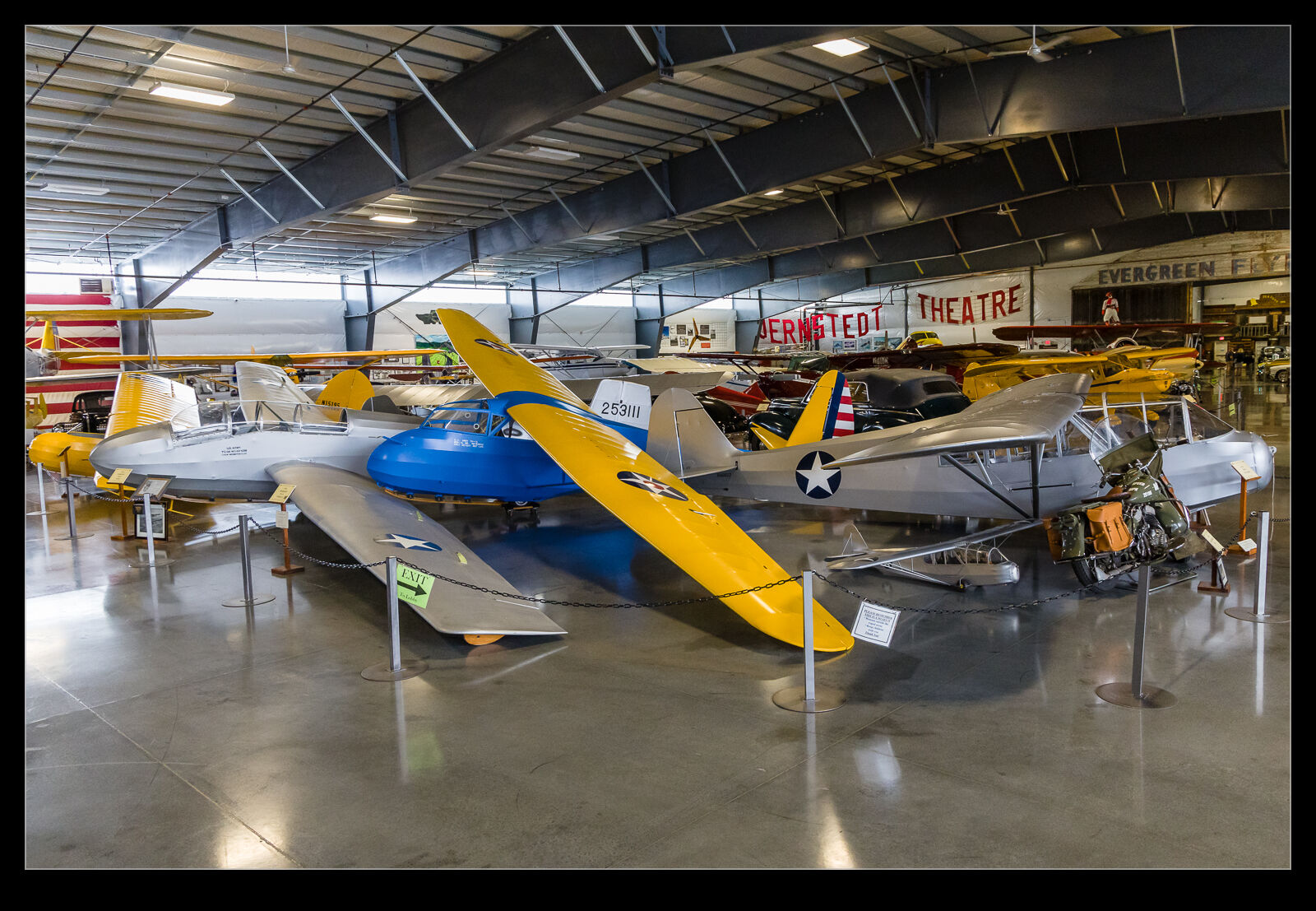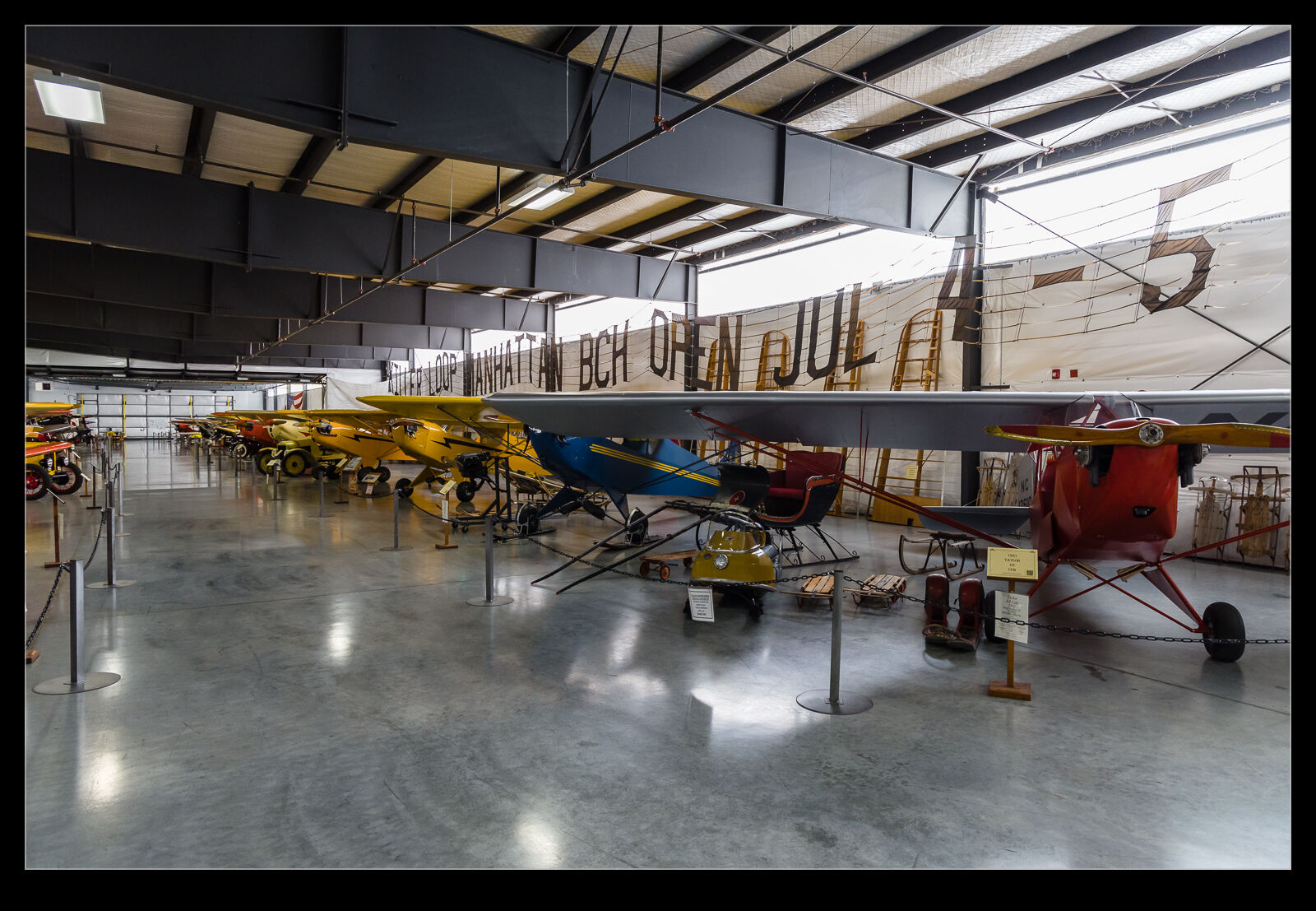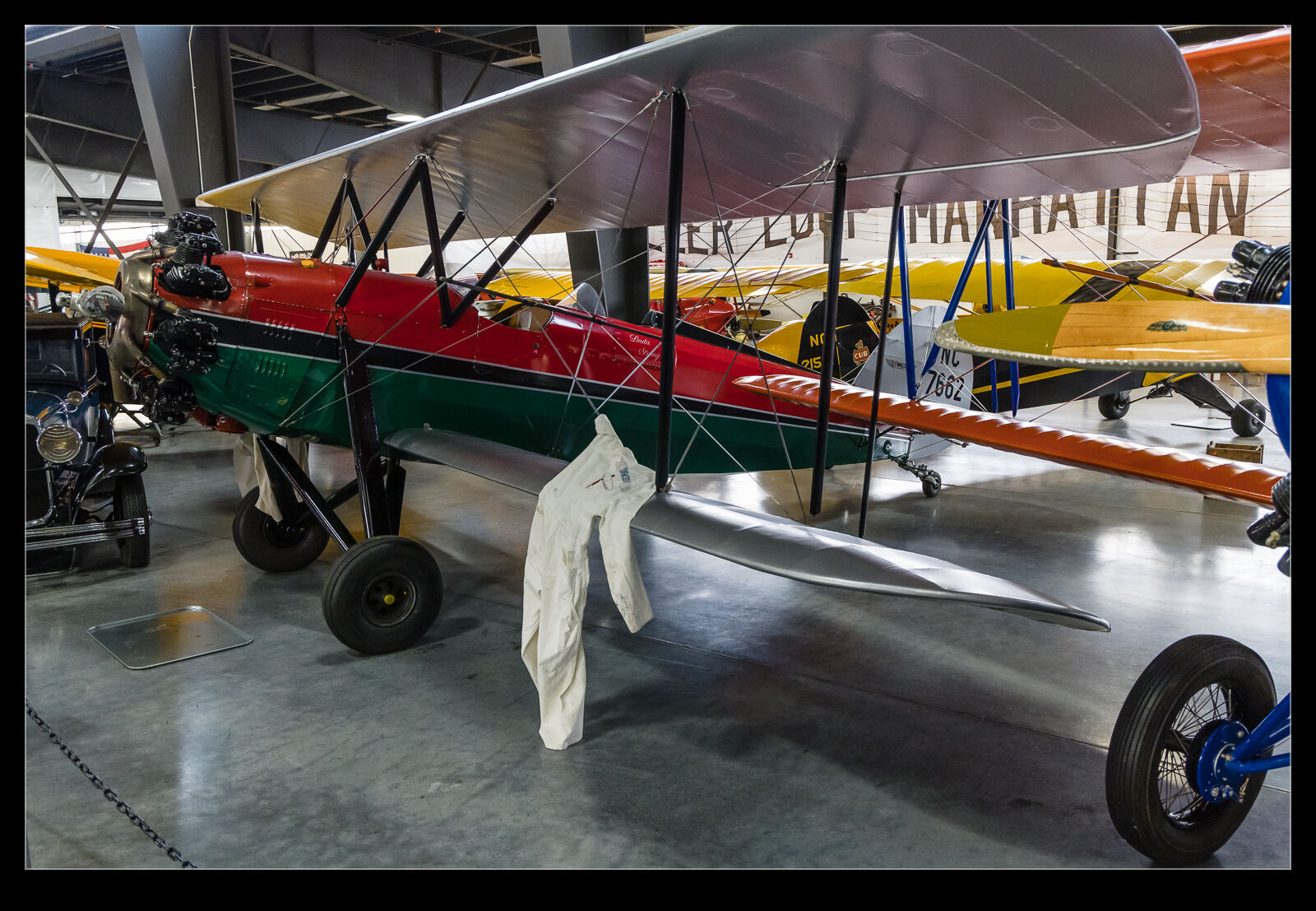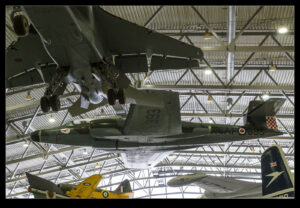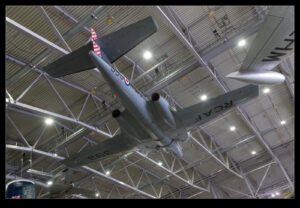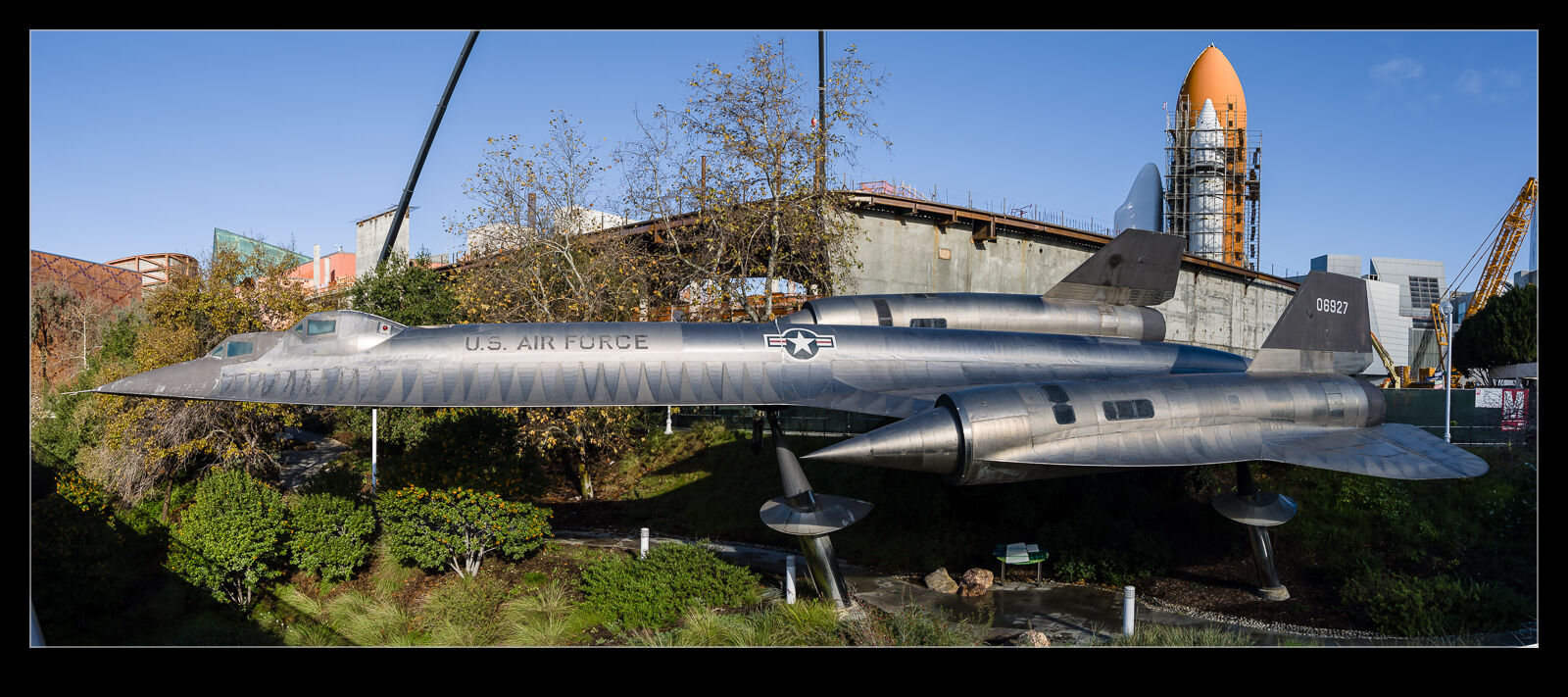 Google Maps can really be your friend. I was hoping to find the time to get to see the space shuttle stack in Expo Park while I was back in LA if possible. I went on Google Maps to see how to get there and the layout of the area and I saw a tag for an A-12. Sure enough, the twin seat Lockheed A-12 is mounted on display right next to the parking lot. It is tucked in between the lot and a pathway over a dip in the grounds. It is rather tight to the parking lot which made getting shots a touch tricky but the early morning light when I was there was the best angle for it. I was pleased to add an unusual airframe to the briefest of visits!
Google Maps can really be your friend. I was hoping to find the time to get to see the space shuttle stack in Expo Park while I was back in LA if possible. I went on Google Maps to see how to get there and the layout of the area and I saw a tag for an A-12. Sure enough, the twin seat Lockheed A-12 is mounted on display right next to the parking lot. It is tucked in between the lot and a pathway over a dip in the grounds. It is rather tight to the parking lot which made getting shots a touch tricky but the early morning light when I was there was the best angle for it. I was pleased to add an unusual airframe to the briefest of visits!
Tag Archives: museum
The KF Centre of Excellence
 Usually, when I go somewhere new, I have done some research on what aviation related things might be in the area should there happen to be any spare time to squeeze something in. I had actually been checking out the layout of the airport at Kelowna before our trip since I knew that Kelowna Flightcraft had their operations and there was an Alaska Airlines paint facility. I figured it would be worth a drive by if time allowed.
Usually, when I go somewhere new, I have done some research on what aviation related things might be in the area should there happen to be any spare time to squeeze something in. I had actually been checking out the layout of the airport at Kelowna before our trip since I knew that Kelowna Flightcraft had their operations and there was an Alaska Airlines paint facility. I figured it would be worth a drive by if time allowed.
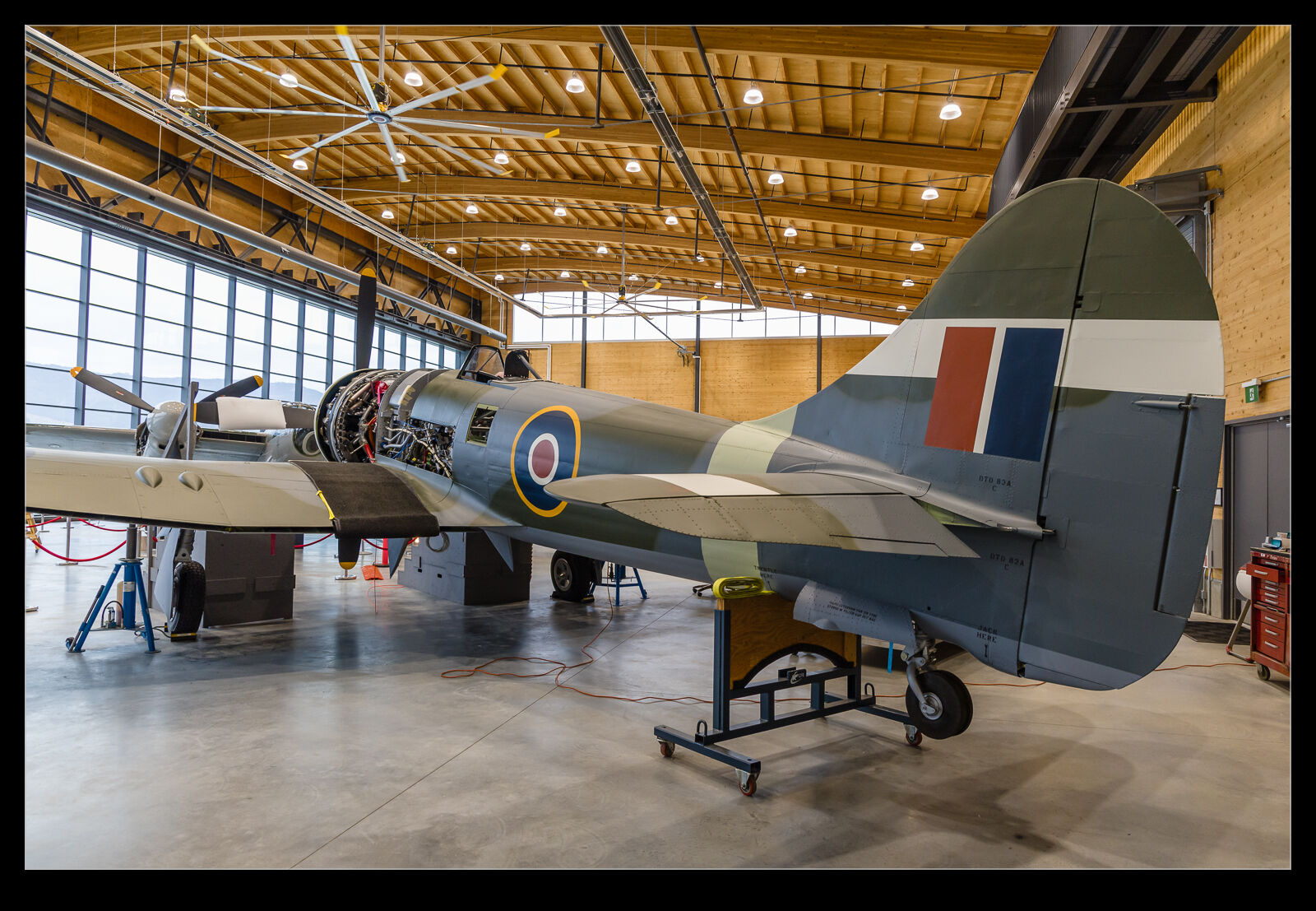 As it turned out, our planned hike got scrubbed because the snow made access to the trail, we intended to try impossible for our not off-road optimized car. We were looking for something else to do and I asked Nancy is a quick drive by at the airport would be possible. With nothing else in mind, so generously acquiesced. We drove up the west side of the airport and passed a pair of Convairs up a side road with a sign saying Open to the Public.
As it turned out, our planned hike got scrubbed because the snow made access to the trail, we intended to try impossible for our not off-road optimized car. We were looking for something else to do and I asked Nancy is a quick drive by at the airport would be possible. With nothing else in mind, so generously acquiesced. We drove up the west side of the airport and passed a pair of Convairs up a side road with a sign saying Open to the Public.
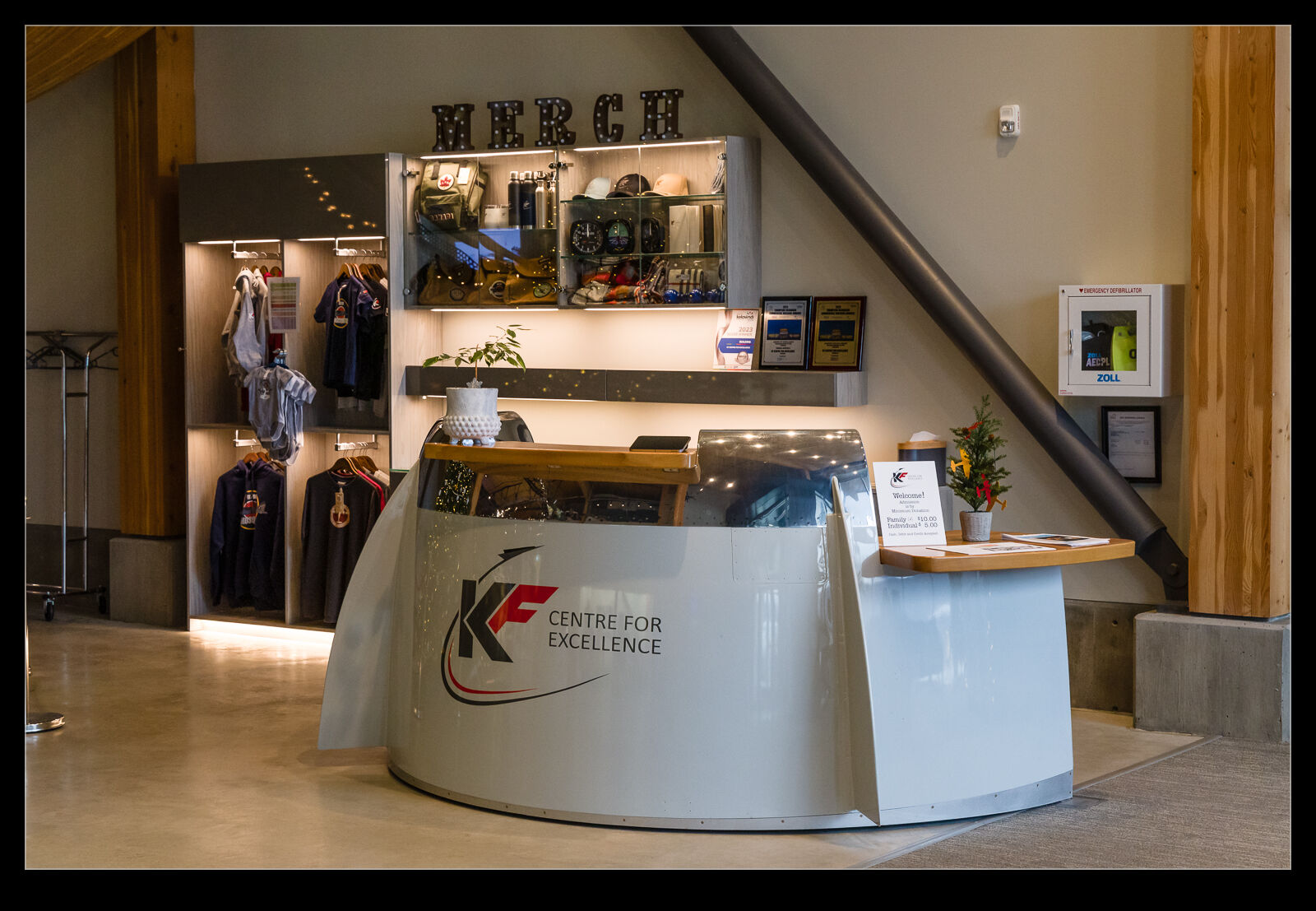 I had no idea what this could be but, when we came back, we drove up to take a look. Much to my surprise (and Nancy’s bemusement that I didn’t already know), we were at the KF Centre of Excellence. This is a new museum that the owner(?) of Kelowna Flightcraft has established. The building itself is a lovely structure. It is loosely designed to resemble the layout of a plane with a central fuselage element and two wings which are hangars. The external styling is very nice, and the interior is tastefully finished with lots of wood. We paid to have a look around with the front desk being a converted nacelle. (Much of the furnishing is aviation components that have been repurposed. An office desk from a tailplane, nacelles that have been modified and the café seating is all old business class seats.
I had no idea what this could be but, when we came back, we drove up to take a look. Much to my surprise (and Nancy’s bemusement that I didn’t already know), we were at the KF Centre of Excellence. This is a new museum that the owner(?) of Kelowna Flightcraft has established. The building itself is a lovely structure. It is loosely designed to resemble the layout of a plane with a central fuselage element and two wings which are hangars. The external styling is very nice, and the interior is tastefully finished with lots of wood. We paid to have a look around with the front desk being a converted nacelle. (Much of the furnishing is aviation components that have been repurposed. An office desk from a tailplane, nacelles that have been modified and the café seating is all old business class seats.
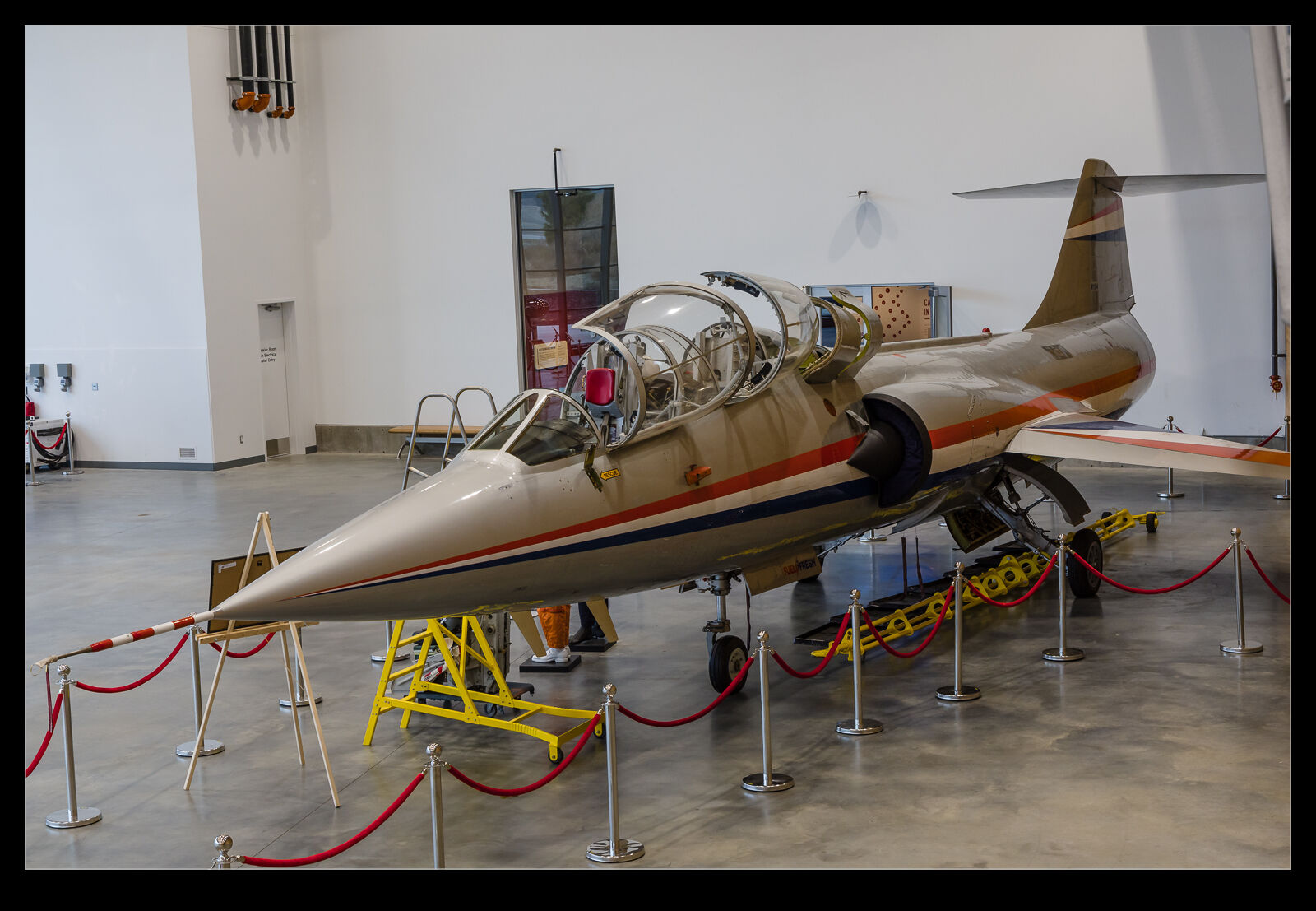 The center section of the museum has a lot of exhibits about flying including engines, fuselage components and even an old simulator. It is quite informative and educational. We enjoyed looking around. Then it was to the hangars. One has a Second World War vintage to it. The largest item was a DC-3 but it was probably the least exciting. Alongside it was a Mosquito that had only recently been flown in. Beside that is a Hawker Tempest which is in an advanced state of restoration to flightworthy condition. It may well be the only Tempest I have seen. I’m not sure if I have ever seen one before.
The center section of the museum has a lot of exhibits about flying including engines, fuselage components and even an old simulator. It is quite informative and educational. We enjoyed looking around. Then it was to the hangars. One has a Second World War vintage to it. The largest item was a DC-3 but it was probably the least exciting. Alongside it was a Mosquito that had only recently been flown in. Beside that is a Hawker Tempest which is in an advanced state of restoration to flightworthy condition. It may well be the only Tempest I have seen. I’m not sure if I have ever seen one before.
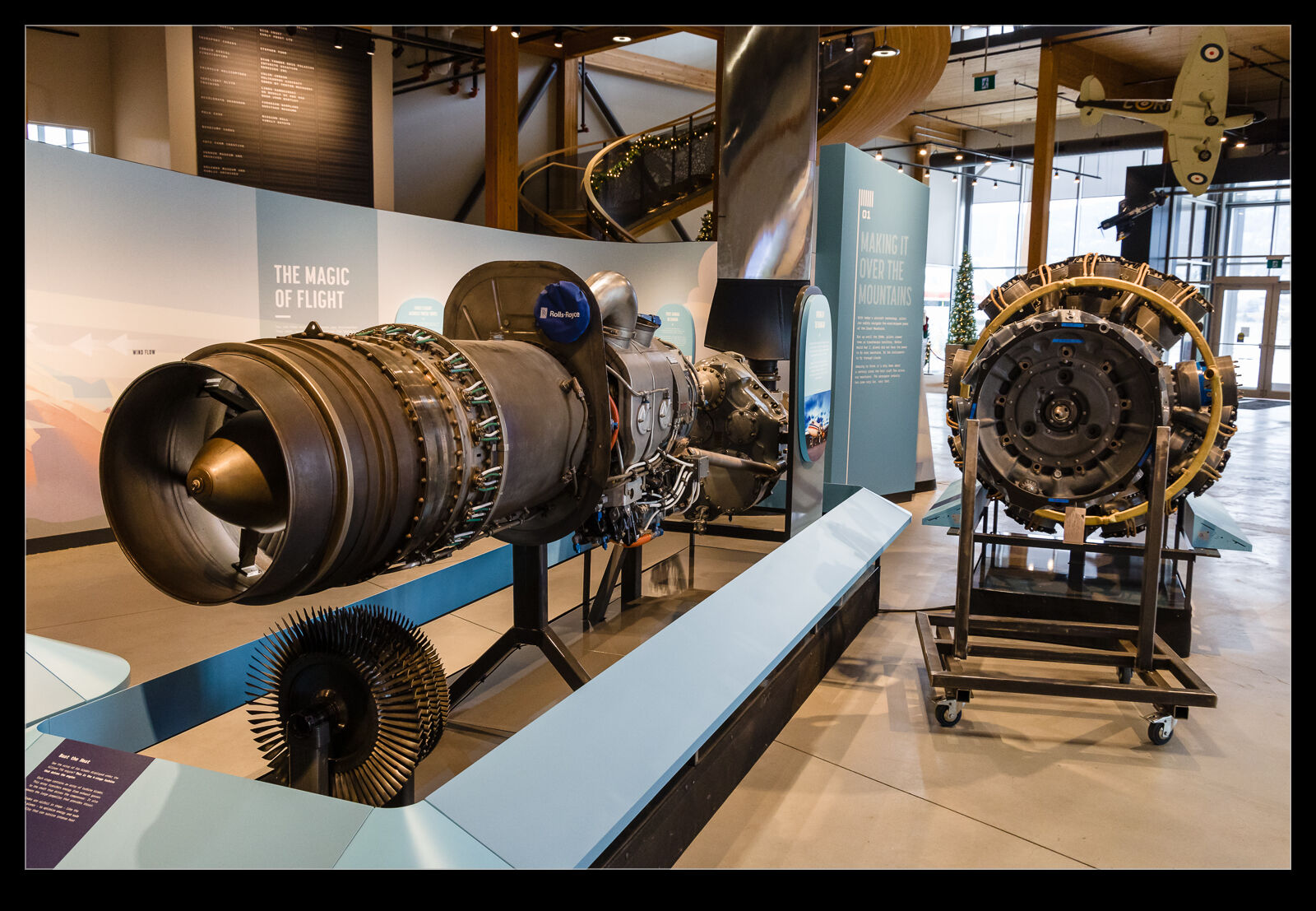 Across to the other side and things are still quite empty. Clearly there are plans to add more aircraft in due course. A Staggerwing and a few floatplanes are in place but the two-seat F-104 Starfighter is definitely the most exotic. It was airworthy until relatively recently. Sadly, it is rather tight to the wall which made getting shots from different angles tricky. Still cool to see it though.
Across to the other side and things are still quite empty. Clearly there are plans to add more aircraft in due course. A Staggerwing and a few floatplanes are in place but the two-seat F-104 Starfighter is definitely the most exotic. It was airworthy until relatively recently. Sadly, it is rather tight to the wall which made getting shots from different angles tricky. Still cool to see it though.
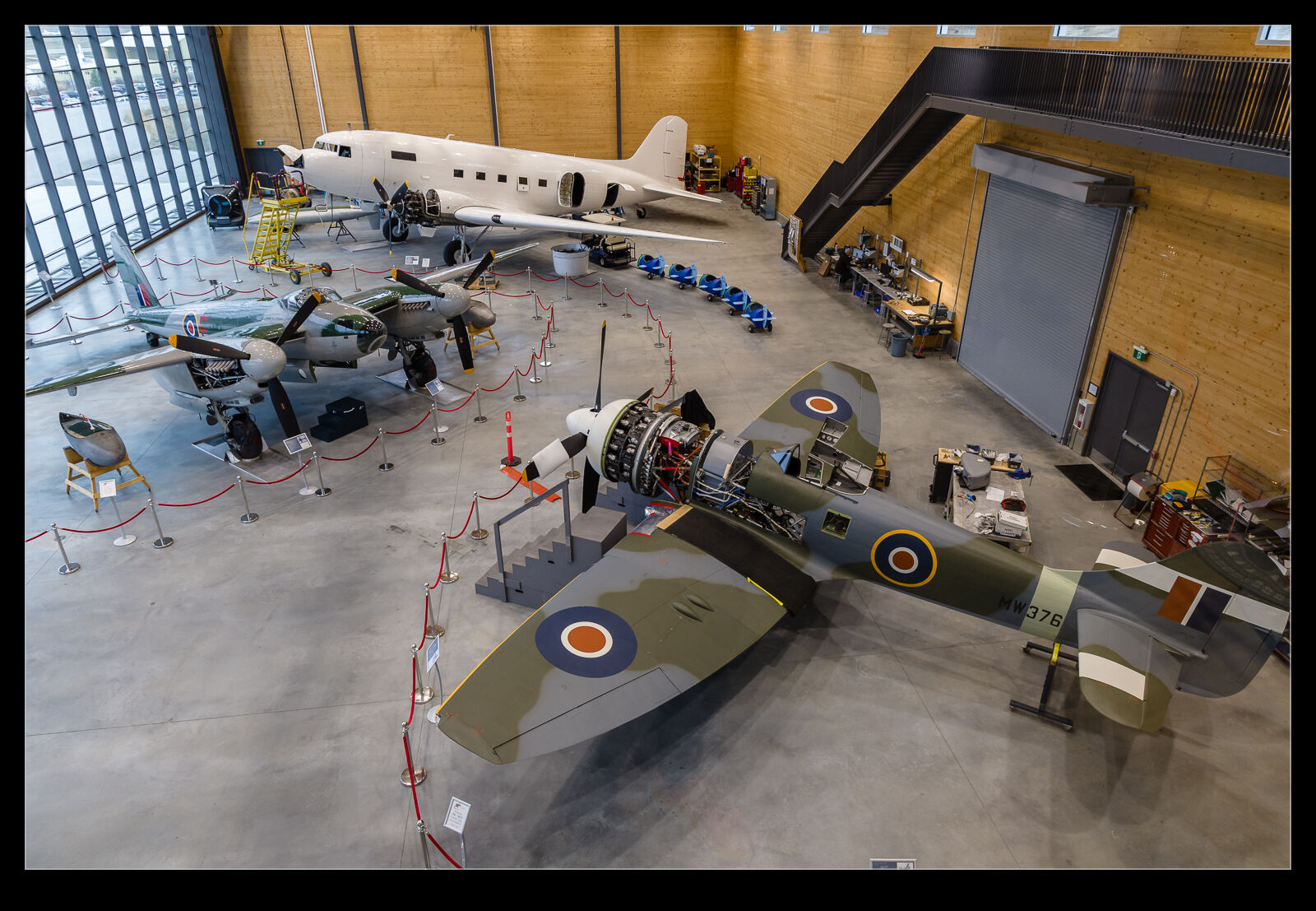 I had no idea about the museum. I had heard something about the Mosquito flying out of Vancouver to a new owner but hadn’t really pieced together what was going on so didn’t realize it was Kelowna. The whole thing was quite a surprise. Finding such a collection and in such a lovely building was a shock. Oh yes, parked out front were two Convairs. One was the old Honeywell testbed that I have shot prior to its retirement and the other is a retired water bomber. How cool. (As an aside, the Honeywell 757 testbed was just down the road undergoing some maintenance work.)
I had no idea about the museum. I had heard something about the Mosquito flying out of Vancouver to a new owner but hadn’t really pieced together what was going on so didn’t realize it was Kelowna. The whole thing was quite a surprise. Finding such a collection and in such a lovely building was a shock. Oh yes, parked out front were two Convairs. One was the old Honeywell testbed that I have shot prior to its retirement and the other is a retired water bomber. How cool. (As an aside, the Honeywell 757 testbed was just down the road undergoing some maintenance work.)
Endeavour Assembled in the Construction Site
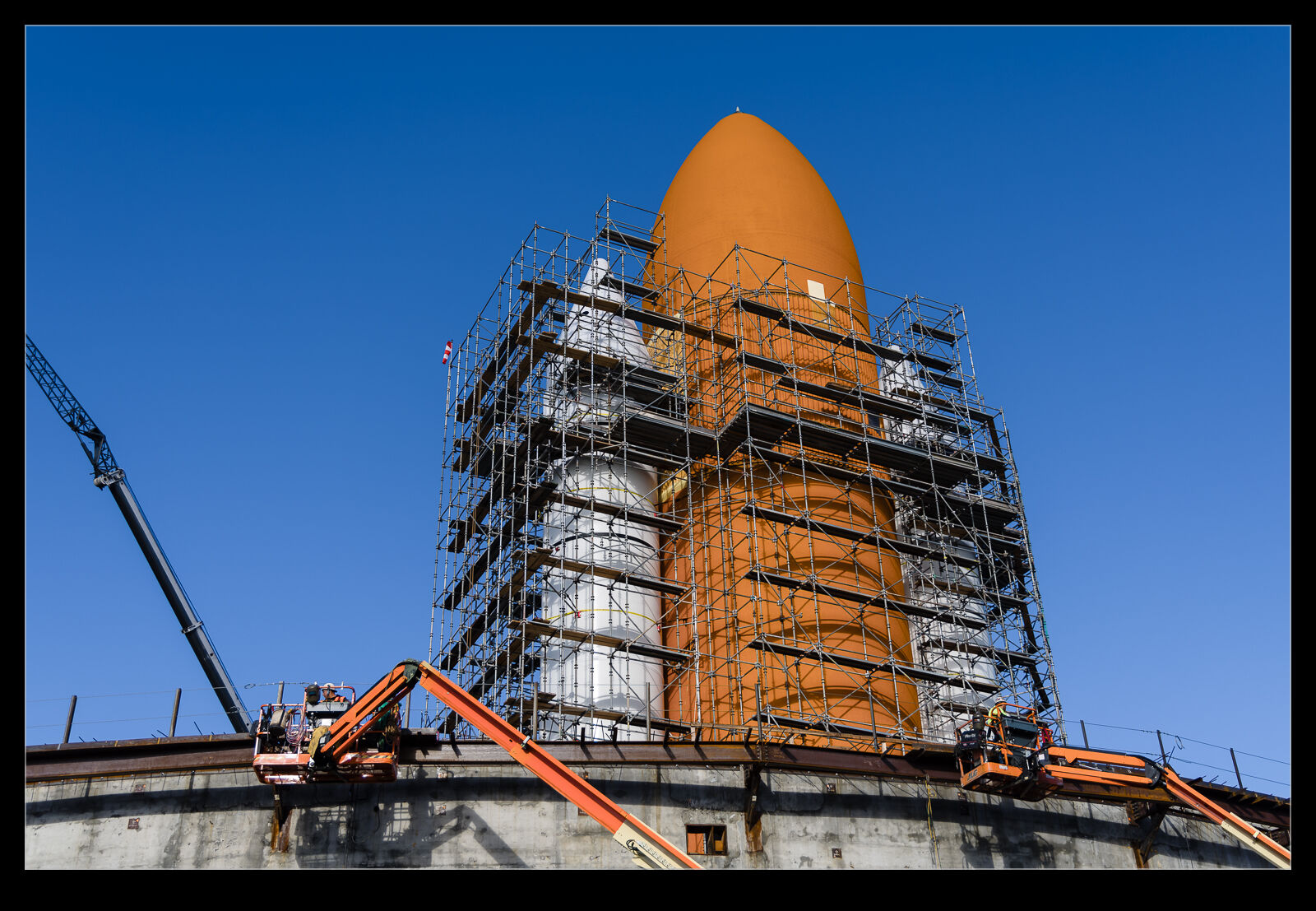 I made a big mistake a decade back when the Space Shuttle Endeavour was moved through the streets of LA from the airport to the California Science Center where it has been on display ever since. I was in California and could have made a trip down but, for various reasons, didn’t end up doing so. I have regretted it ever since. The beginning of 2024 was the time when they relocated the shuttle from its horizontal position to a new installation where it is stacked on the external tank and boosters in the launch position.
I made a big mistake a decade back when the Space Shuttle Endeavour was moved through the streets of LA from the airport to the California Science Center where it has been on display ever since. I was in California and could have made a trip down but, for various reasons, didn’t end up doing so. I have regretted it ever since. The beginning of 2024 was the time when they relocated the shuttle from its horizontal position to a new installation where it is stacked on the external tank and boosters in the launch position.
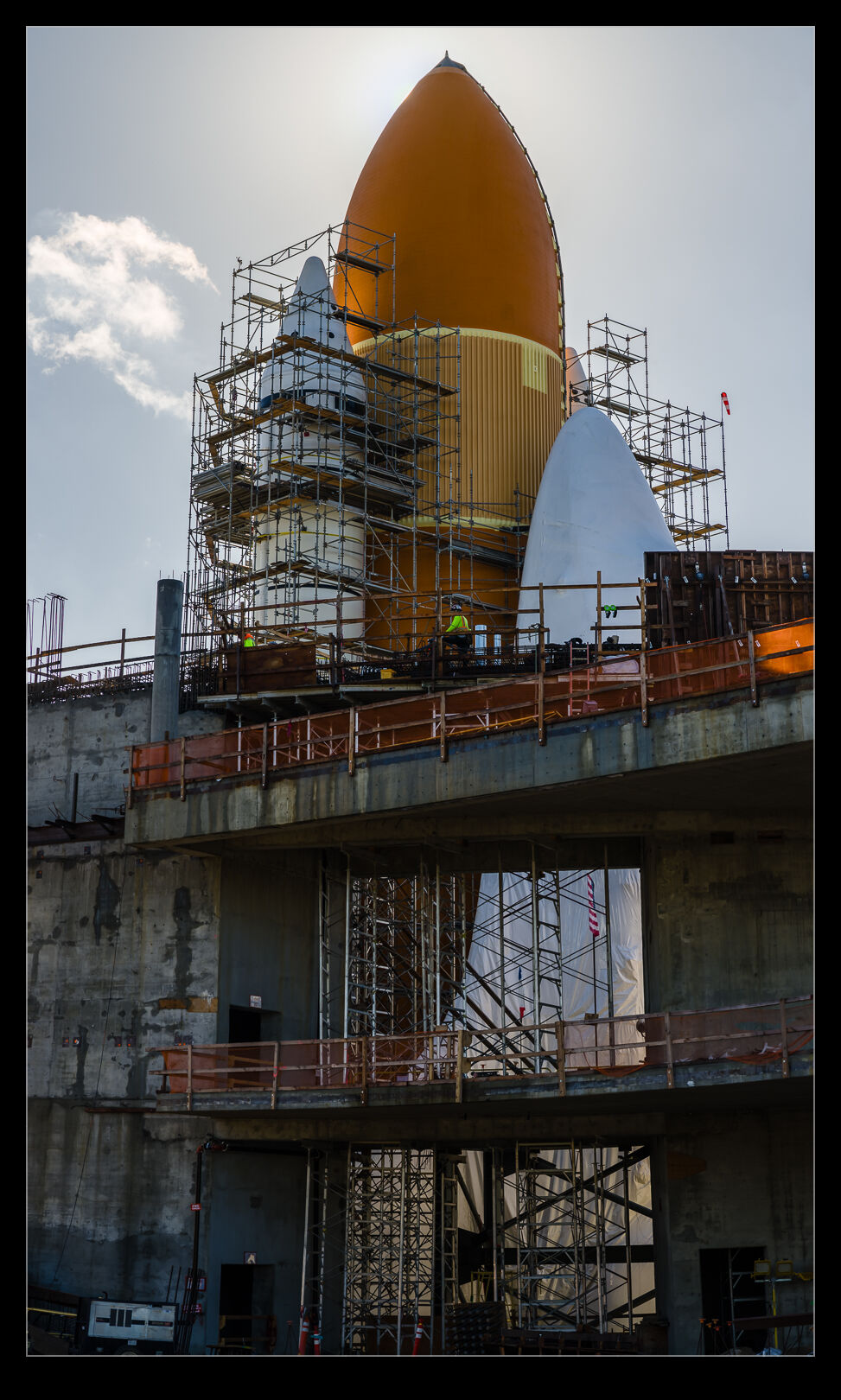 I had a work trip in January that took me to LA and I was really hoping to see the stacking because the external tank was due to be lifted into position between the boosters. Sadly, there was no spare time from arriving to departing and I didn’t get a chance to see it other than a brief glimpse from my Uber as I drove to and from the airport.
I had a work trip in January that took me to LA and I was really hoping to see the stacking because the external tank was due to be lifted into position between the boosters. Sadly, there was no spare time from arriving to departing and I didn’t get a chance to see it other than a brief glimpse from my Uber as I drove to and from the airport.
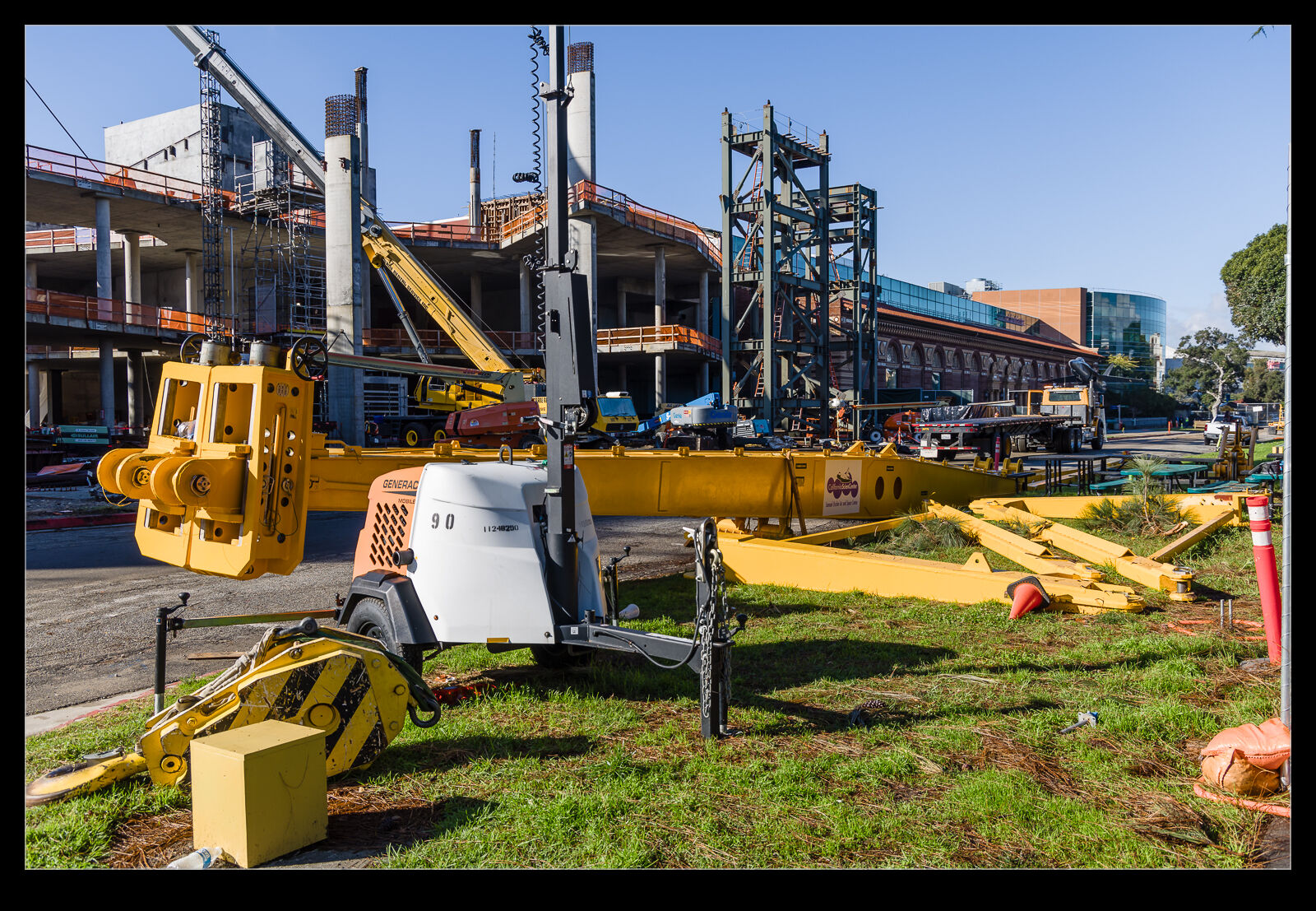 A couple of weeks later, I had to go back again. By this time, the shuttle orbiter had been lifted into position on the stack too. It is wrapped up to protect it from the weather since the whole stack is outside until they finish constructing the rest of the museum around it! On the final day of my trip, I was heading to the airport in the morning. I figured I could just squeeze a quick detour down to have a look at the shuttle before I went to the airport.
A couple of weeks later, I had to go back again. By this time, the shuttle orbiter had been lifted into position on the stack too. It is wrapped up to protect it from the weather since the whole stack is outside until they finish constructing the rest of the museum around it! On the final day of my trip, I was heading to the airport in the morning. I figured I could just squeeze a quick detour down to have a look at the shuttle before I went to the airport.
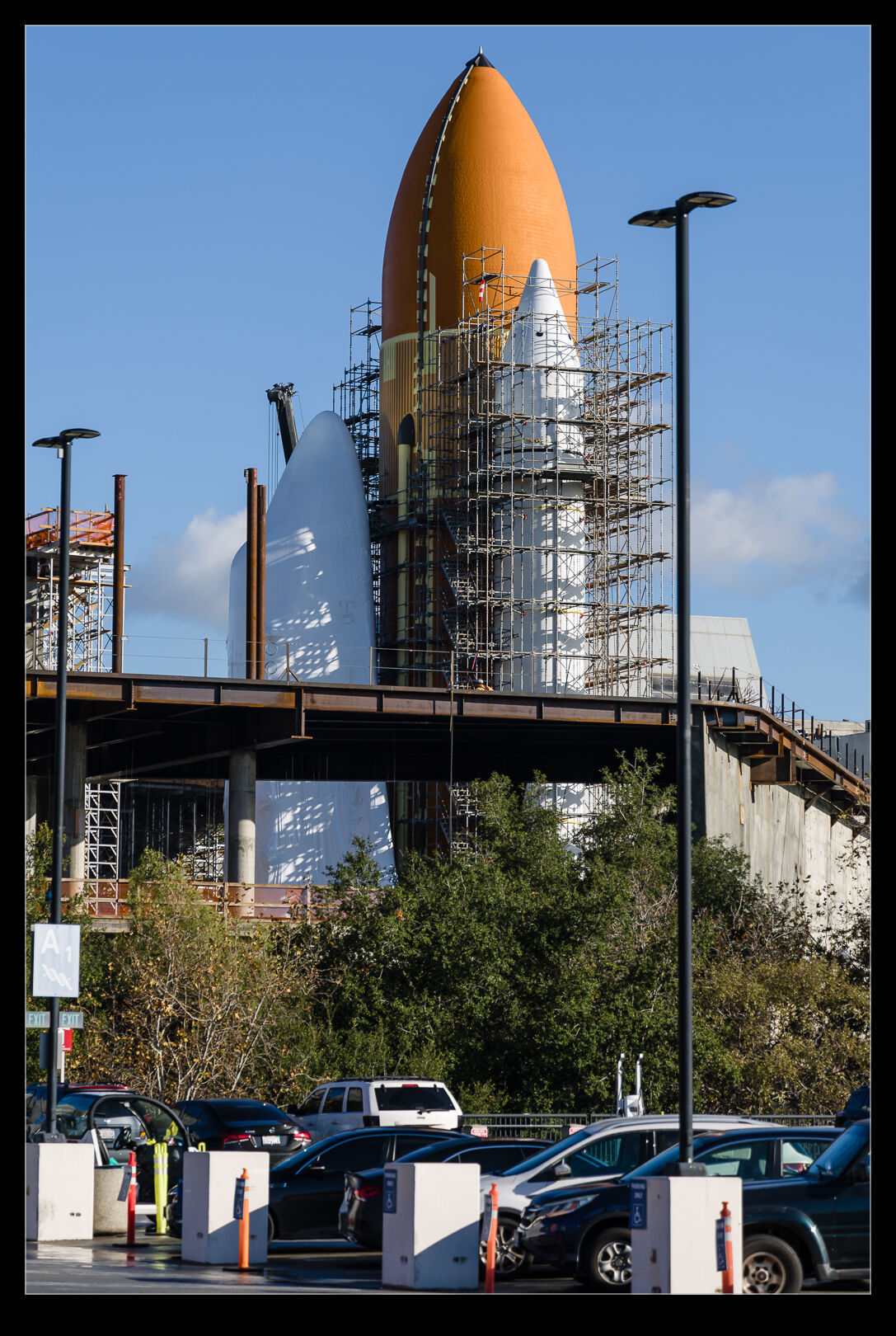 It is quite surreal seeing a stacked shuttle in the middle of a park. It is even more strange because there is a lot of construction all around it obscuring your view of the subject. I walked all around the area (at least where it was possible to go given the ongoing construction) looking to see what I could see. Some of the angles had a better view but these were also backlit. I ended up trying hard to find ways to let the tank block the sun! I also was surprised to come across the lifting frames for the orbiter which, having served their purpose, were now sitting on the ground by a fence. Not sure what happens to them now!
It is quite surreal seeing a stacked shuttle in the middle of a park. It is even more strange because there is a lot of construction all around it obscuring your view of the subject. I walked all around the area (at least where it was possible to go given the ongoing construction) looking to see what I could see. Some of the angles had a better view but these were also backlit. I ended up trying hard to find ways to let the tank block the sun! I also was surprised to come across the lifting frames for the orbiter which, having served their purpose, were now sitting on the ground by a fence. Not sure what happens to them now!
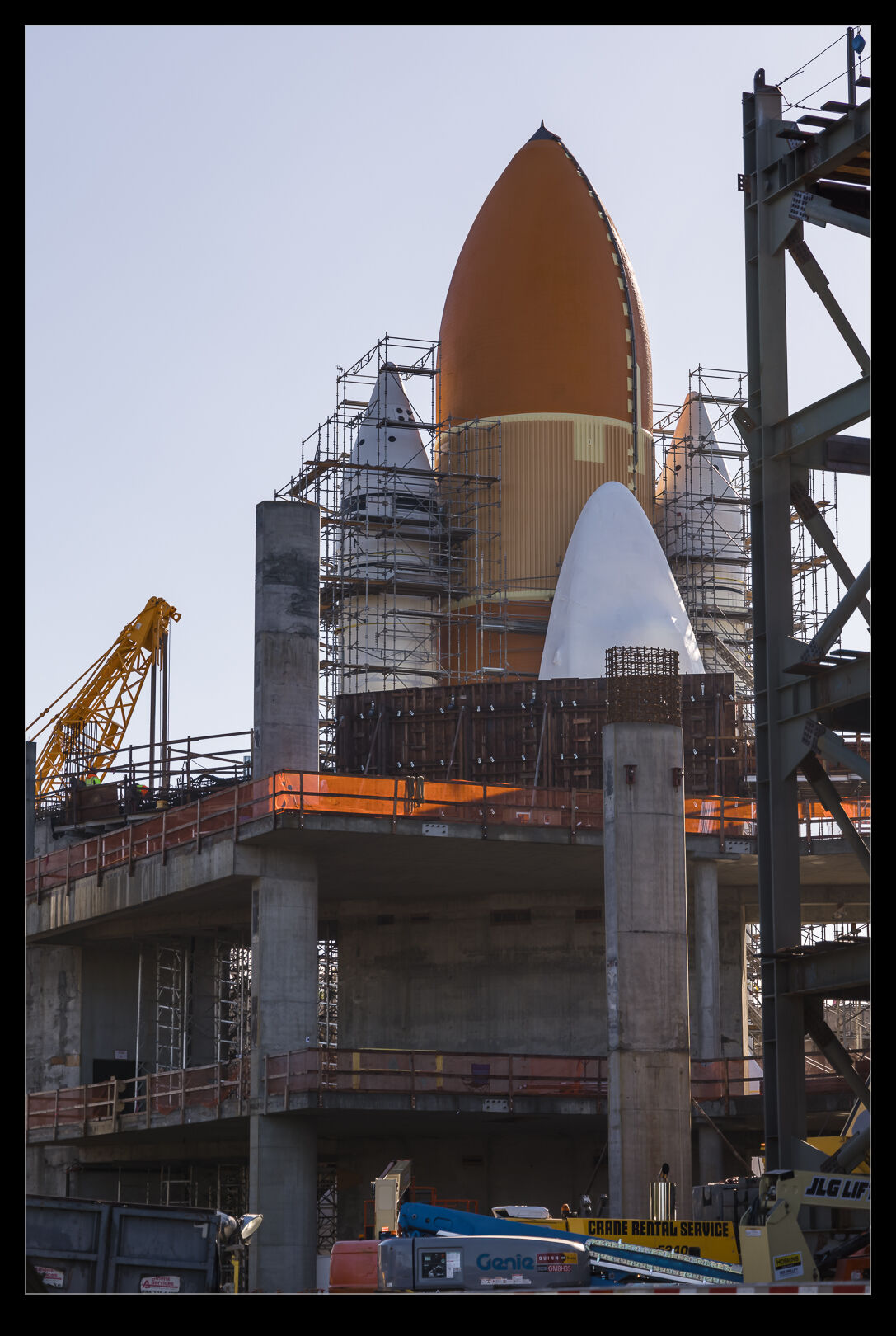 Construction of the museum will continue through this year. I read somewhere that the structure will be completed by about July but I am not sure how accurate that is and whether that includes all of the fit out. When it will be possible to visit the finished exhibit, we shall see. It should be something to see when it is done. I have seen Atlantis and Enterprise so, after this, I just need to get to NASM to see Discovery.
Construction of the museum will continue through this year. I read somewhere that the structure will be completed by about July but I am not sure how accurate that is and whether that includes all of the fit out. When it will be possible to visit the finished exhibit, we shall see. It should be something to see when it is done. I have seen Atlantis and Enterprise so, after this, I just need to get to NASM to see Discovery.
SS Great Britain
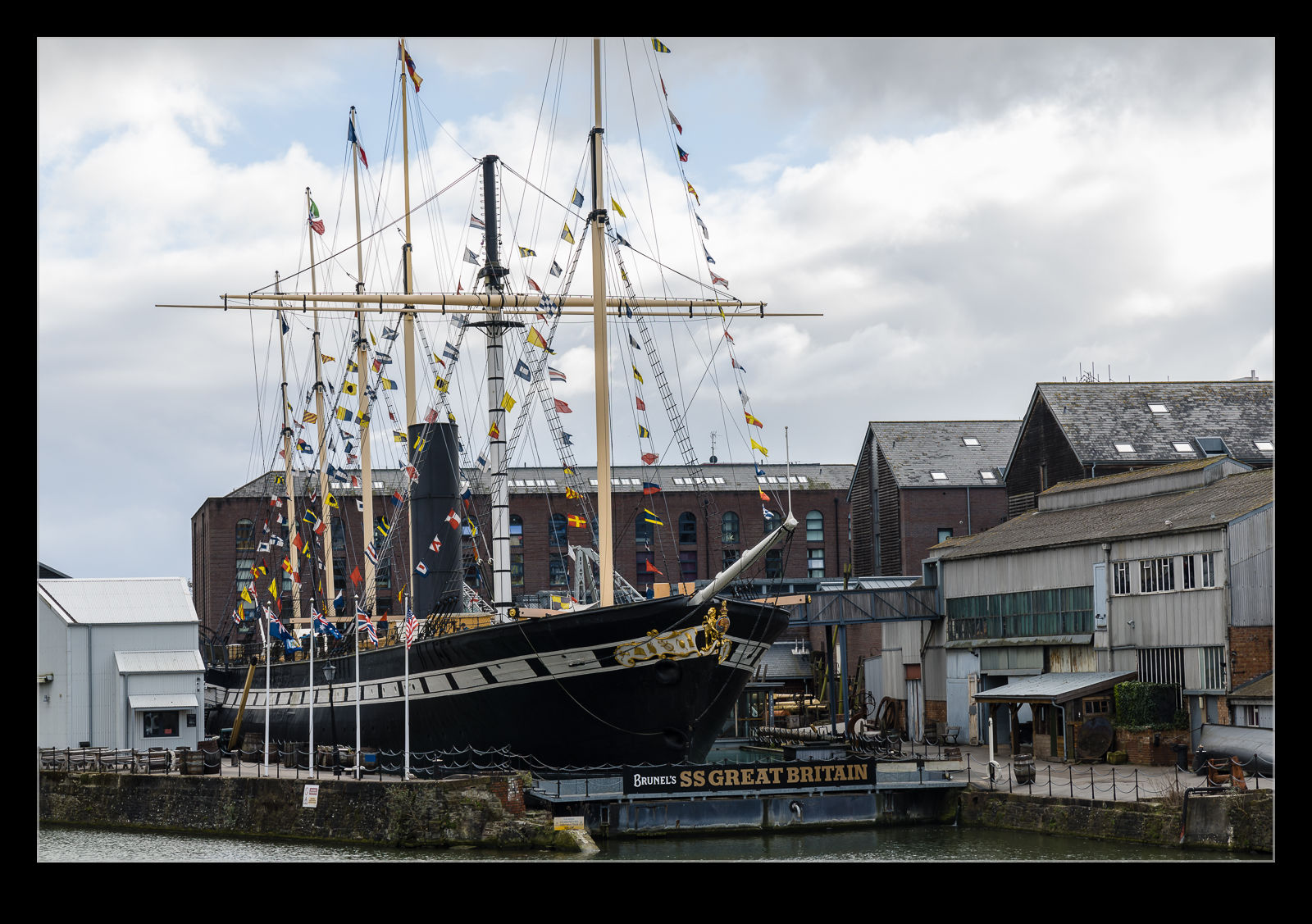 Bristol Docks are the home of the SS Great Britain. The first iron hulled ship with screw propulsion, the Great Britain ended up in Port Stanley. It was rescued in the 80s and brought to Bristol where it was restored over many years. Now it is in something like its original condition. It was not open to the public on the day we were there but it was visible from the opposite side of the docks as we walked down and then, as we came back up the other side, I could get a quick glimpse through the fence.
Bristol Docks are the home of the SS Great Britain. The first iron hulled ship with screw propulsion, the Great Britain ended up in Port Stanley. It was rescued in the 80s and brought to Bristol where it was restored over many years. Now it is in something like its original condition. It was not open to the public on the day we were there but it was visible from the opposite side of the docks as we walked down and then, as we came back up the other side, I could get a quick glimpse through the fence.
This Is Not Your Standard Dornier
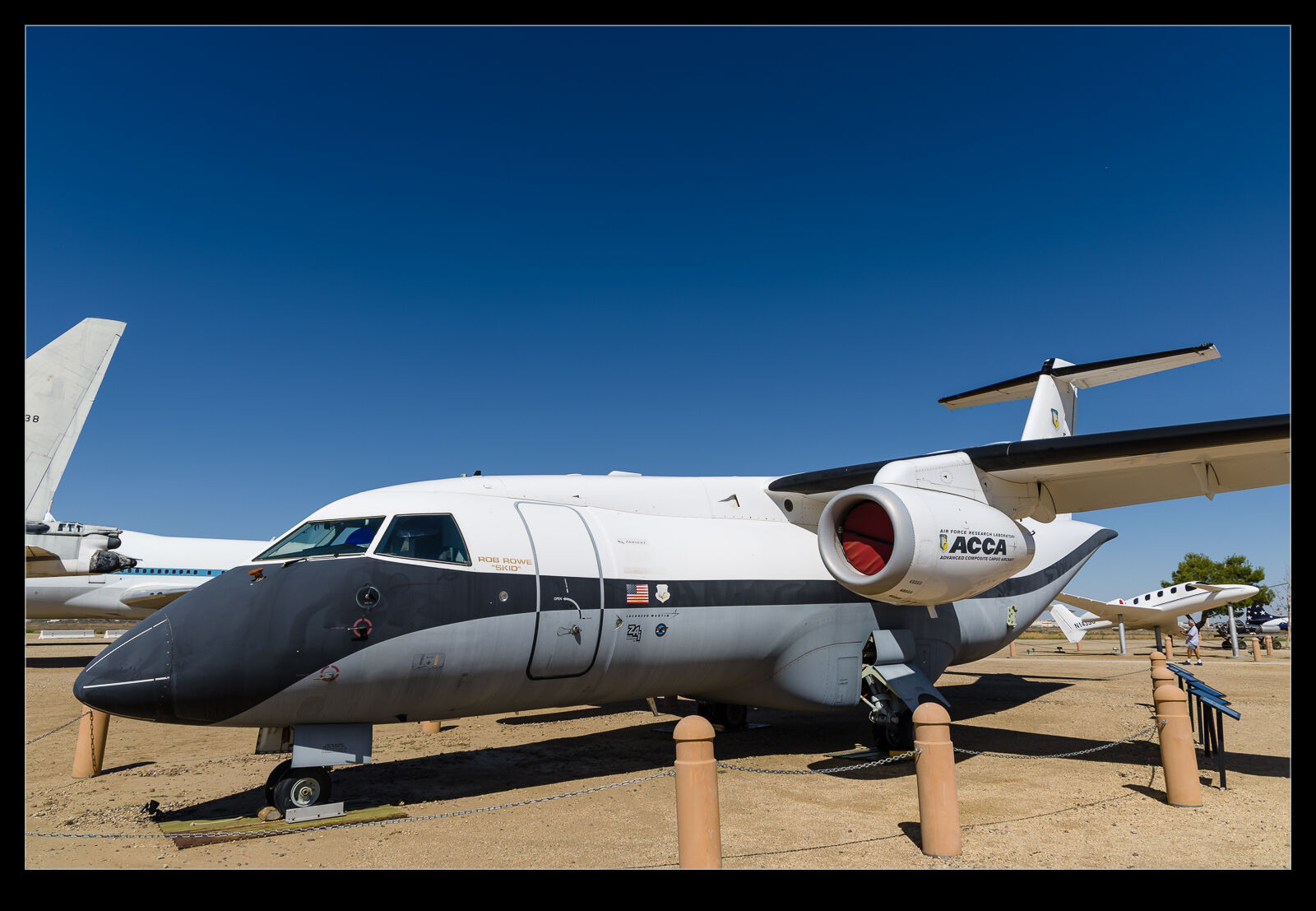 I have subscribed to Flight International for a very long time. I used to have it ordered with my local newsagent in Cowes when I was in high school, I got it ordered by Smiths in Kensington High Street when I was a student and, when I had a job after graduation, I finally got a proper subscription set up. That has continued ever since but, these days, Flight has become a digital only subscription for me. Still, I have continued it all these years despite having left the industry long ago. It does provide me with information on unusual test programs and that includes the Lockheed Martin X-55 Advanced Composite Cargo Aircraft (ACCA).
I have subscribed to Flight International for a very long time. I used to have it ordered with my local newsagent in Cowes when I was in high school, I got it ordered by Smiths in Kensington High Street when I was a student and, when I had a job after graduation, I finally got a proper subscription set up. That has continued ever since but, these days, Flight has become a digital only subscription for me. Still, I have continued it all these years despite having left the industry long ago. It does provide me with information on unusual test programs and that includes the Lockheed Martin X-55 Advanced Composite Cargo Aircraft (ACCA).
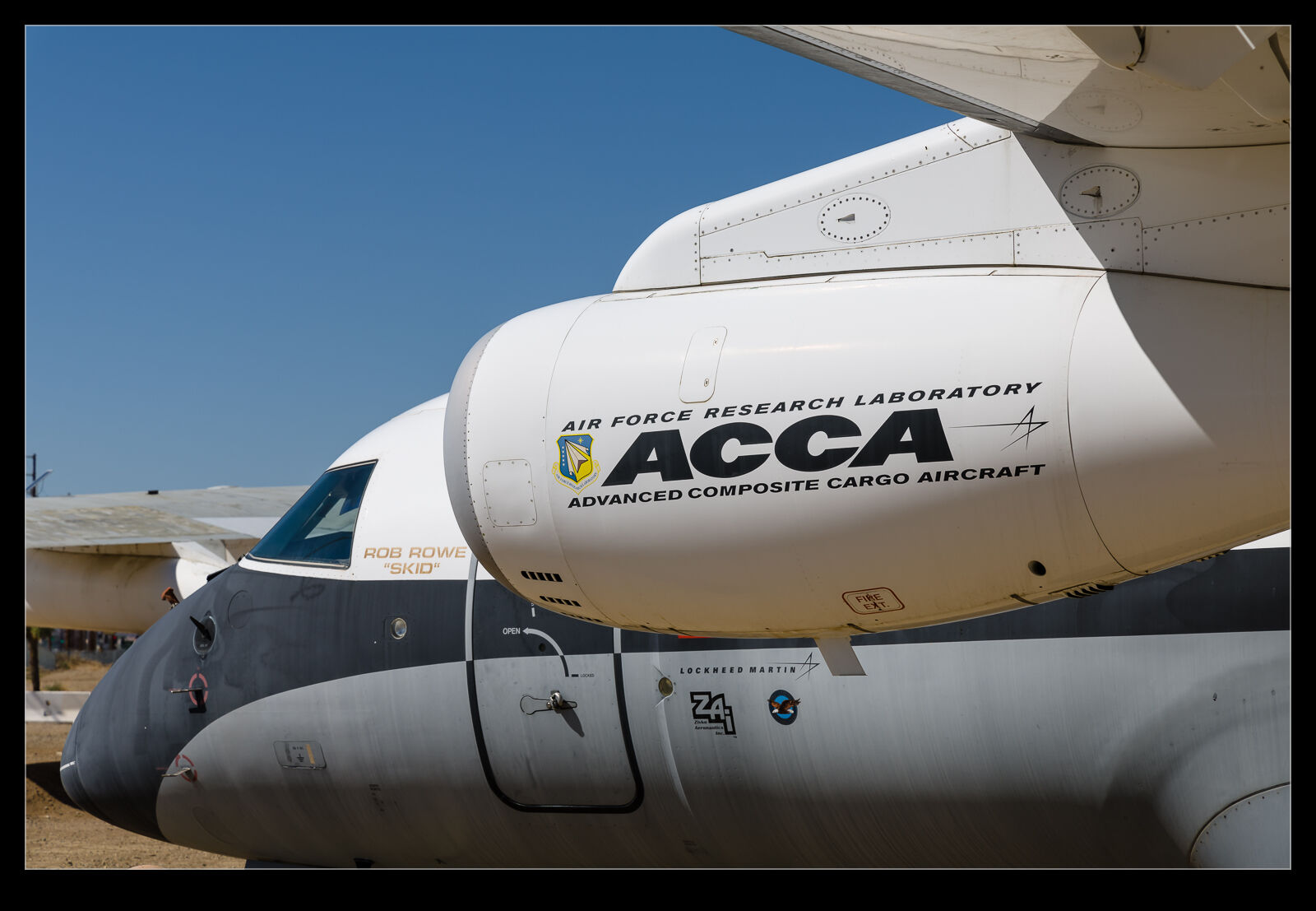 This was a demonstrator program for a new composite fuselage construction. The baseline aircraft was a Dornier 328Jet but it had its fuselage replaced by a composite one that LM built using advanced techniques and with a far shorter lead time. As a demonstrator, things did not go quite as smoothly as they might have but that is why you do programs such as this. It was never intended to be a production jet. It was to show what could be done with the technology if required. The jet was flown for a number of tests but I think building it was the bigger part of the program.
This was a demonstrator program for a new composite fuselage construction. The baseline aircraft was a Dornier 328Jet but it had its fuselage replaced by a composite one that LM built using advanced techniques and with a far shorter lead time. As a demonstrator, things did not go quite as smoothly as they might have but that is why you do programs such as this. It was never intended to be a production jet. It was to show what could be done with the technology if required. The jet was flown for a number of tests but I think building it was the bigger part of the program.
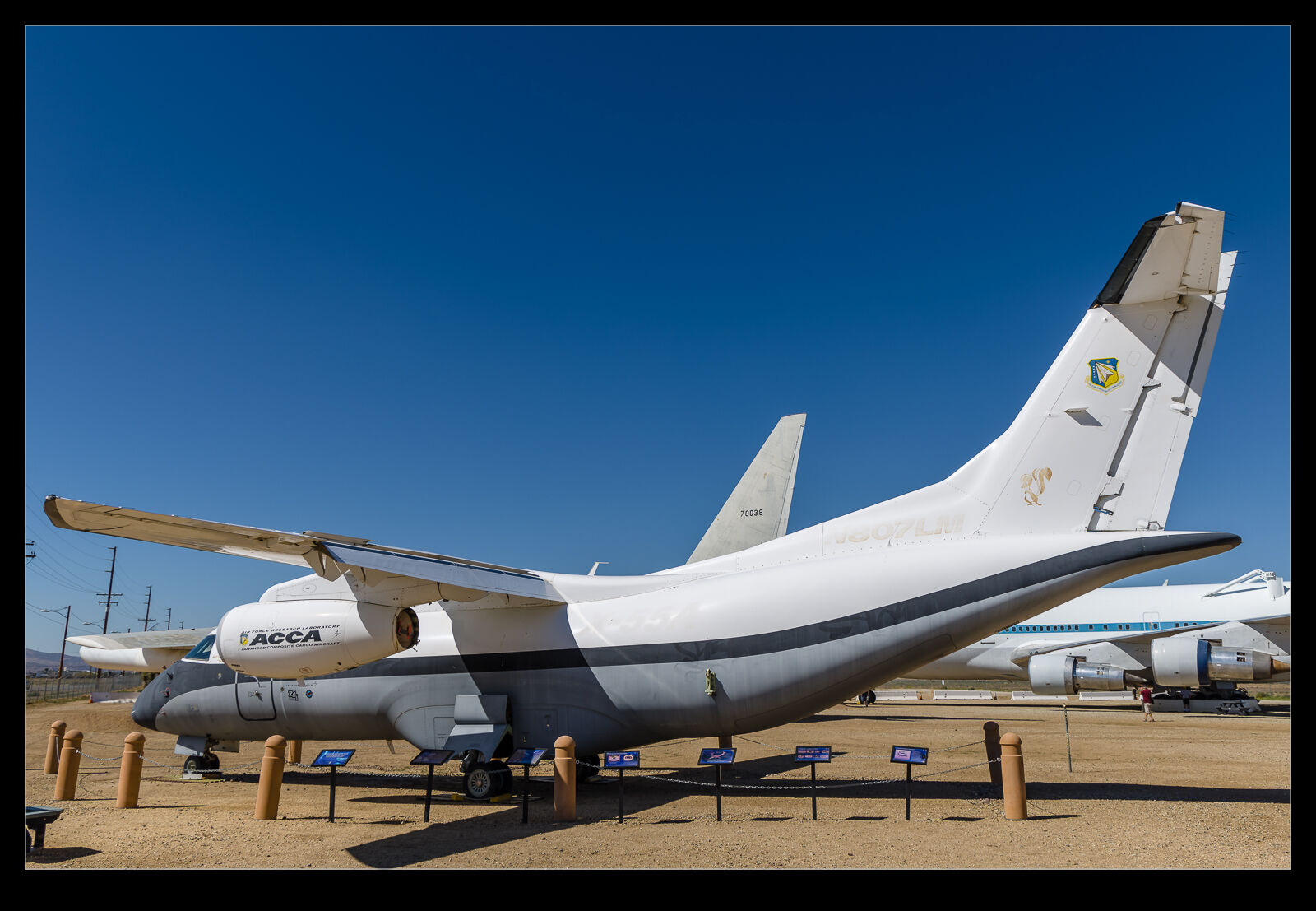 Once testing was complete, the airframe became part of the collection at the Joe Davies Airpark in Palmdale. When I saw it was there, I was very interested to see it. I suspect, for a lot of the visitors to the Airpark, it is one of the less interesting aircraft on display. The signs explain what it is all about but that is probably of little interest to many visitors. For a geek like me, though, it was probably one of the most interesting aircraft in the collection. Sure, the Shuttle Carrier Aircraft is special but there are two of those. This aircraft is unique. Having read about it long ago, seeing it in person is special. (If I ever get to see the Boeing 360 helicopter demonstrator, this will be the same thing.)
Once testing was complete, the airframe became part of the collection at the Joe Davies Airpark in Palmdale. When I saw it was there, I was very interested to see it. I suspect, for a lot of the visitors to the Airpark, it is one of the less interesting aircraft on display. The signs explain what it is all about but that is probably of little interest to many visitors. For a geek like me, though, it was probably one of the most interesting aircraft in the collection. Sure, the Shuttle Carrier Aircraft is special but there are two of those. This aircraft is unique. Having read about it long ago, seeing it in person is special. (If I ever get to see the Boeing 360 helicopter demonstrator, this will be the same thing.)
P1A Tucked In The Back
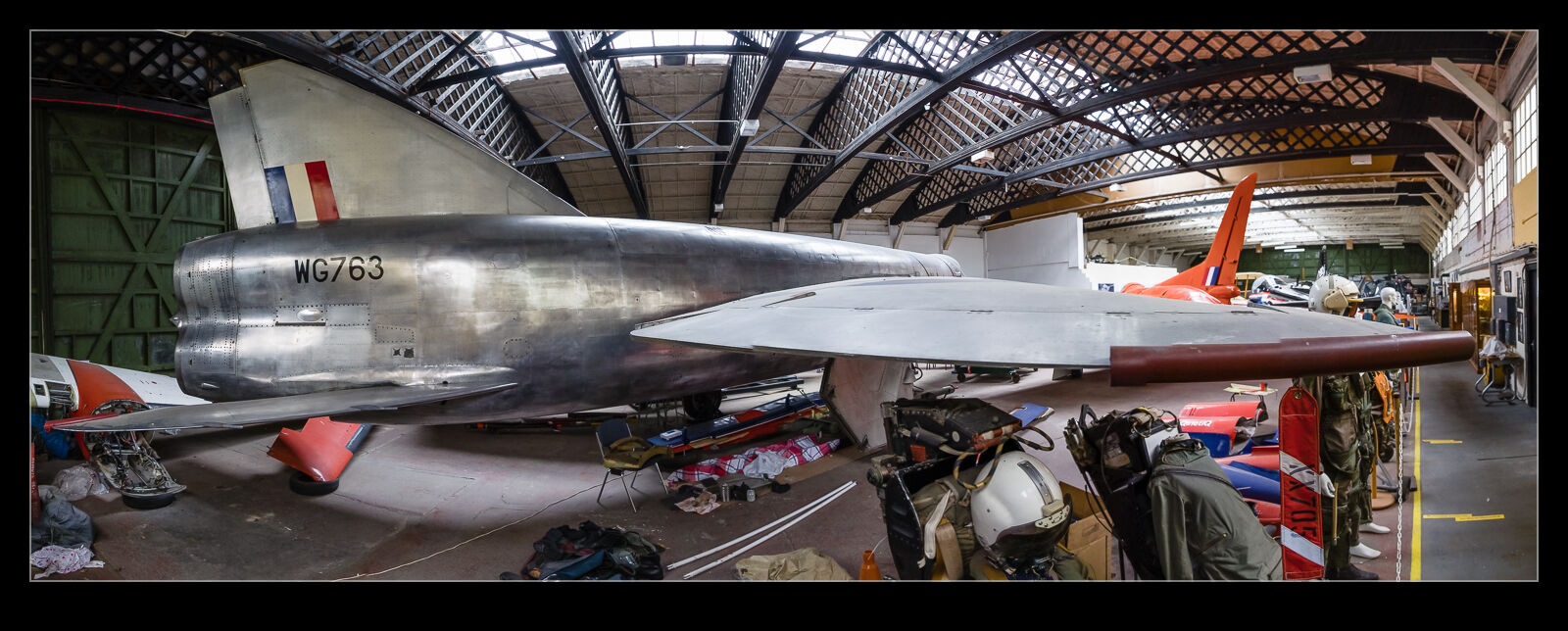 The Boscombe collection has a couple of interesting testbed airframes. The Avro 707 was in a previous post but another fine jet is the English Electric P1A. The precursor to what was to become the Lightning, the P1A is very similar in some respects but quite different in others. The nose is a pitot inlet without the shock cone that the Lightning adopted to house its radar. The rest of the front fuselage has quite a different shape while it also feels lower to the ground than the Lightning was. It is nice that a Lightning front fuselage is displayed alongside it for comparison.
The Boscombe collection has a couple of interesting testbed airframes. The Avro 707 was in a previous post but another fine jet is the English Electric P1A. The precursor to what was to become the Lightning, the P1A is very similar in some respects but quite different in others. The nose is a pitot inlet without the shock cone that the Lightning adopted to house its radar. The rest of the front fuselage has quite a different shape while it also feels lower to the ground than the Lightning was. It is nice that a Lightning front fuselage is displayed alongside it for comparison.
Drone Control Meatbox
 When Llanbedr was the home for a bunch of drones, it also had some old airframes used to support the drone operations. The Sea Vixen was one of the more famous jets saved from that program but the Boscombe collection has a drone support Meteor. The red and yellow paint scheme is not subtle but it looks good, particularly in the dark hangar at Old Sarum where the collection lives. I can’t claim to love the Meatbox but I do find it an interesting jet and seeing one in such good condition is a treat.
When Llanbedr was the home for a bunch of drones, it also had some old airframes used to support the drone operations. The Sea Vixen was one of the more famous jets saved from that program but the Boscombe collection has a drone support Meteor. The red and yellow paint scheme is not subtle but it looks good, particularly in the dark hangar at Old Sarum where the collection lives. I can’t claim to love the Meatbox but I do find it an interesting jet and seeing one in such good condition is a treat.
Back to Erickson At Madras
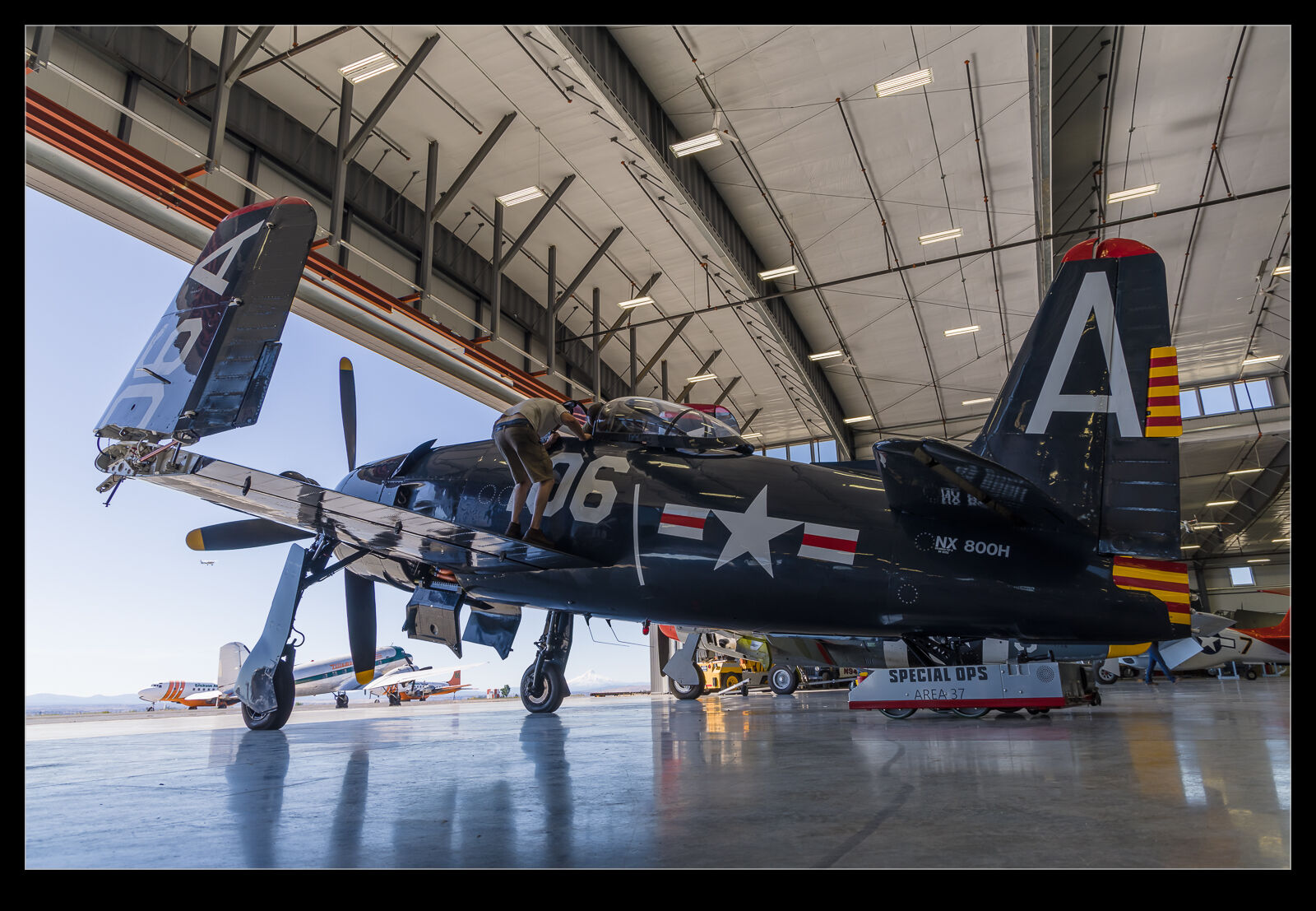 In 2015, I made a trip to Madras Oregon for an air-to-air photography course. Based at the Erickson museum, we had an interesting few days discussing the approach to air to air photography as well as the chance to get some shots while airborne. I had a good look around the museum while I was there as well but I was looking forward to a chance to check it out again when we headed south through Oregon. Madras was on our route from Hood River to Klamath Falls so it was a definite stop.
In 2015, I made a trip to Madras Oregon for an air-to-air photography course. Based at the Erickson museum, we had an interesting few days discussing the approach to air to air photography as well as the chance to get some shots while airborne. I had a good look around the museum while I was there as well but I was looking forward to a chance to check it out again when we headed south through Oregon. Madras was on our route from Hood River to Klamath Falls so it was a definite stop.
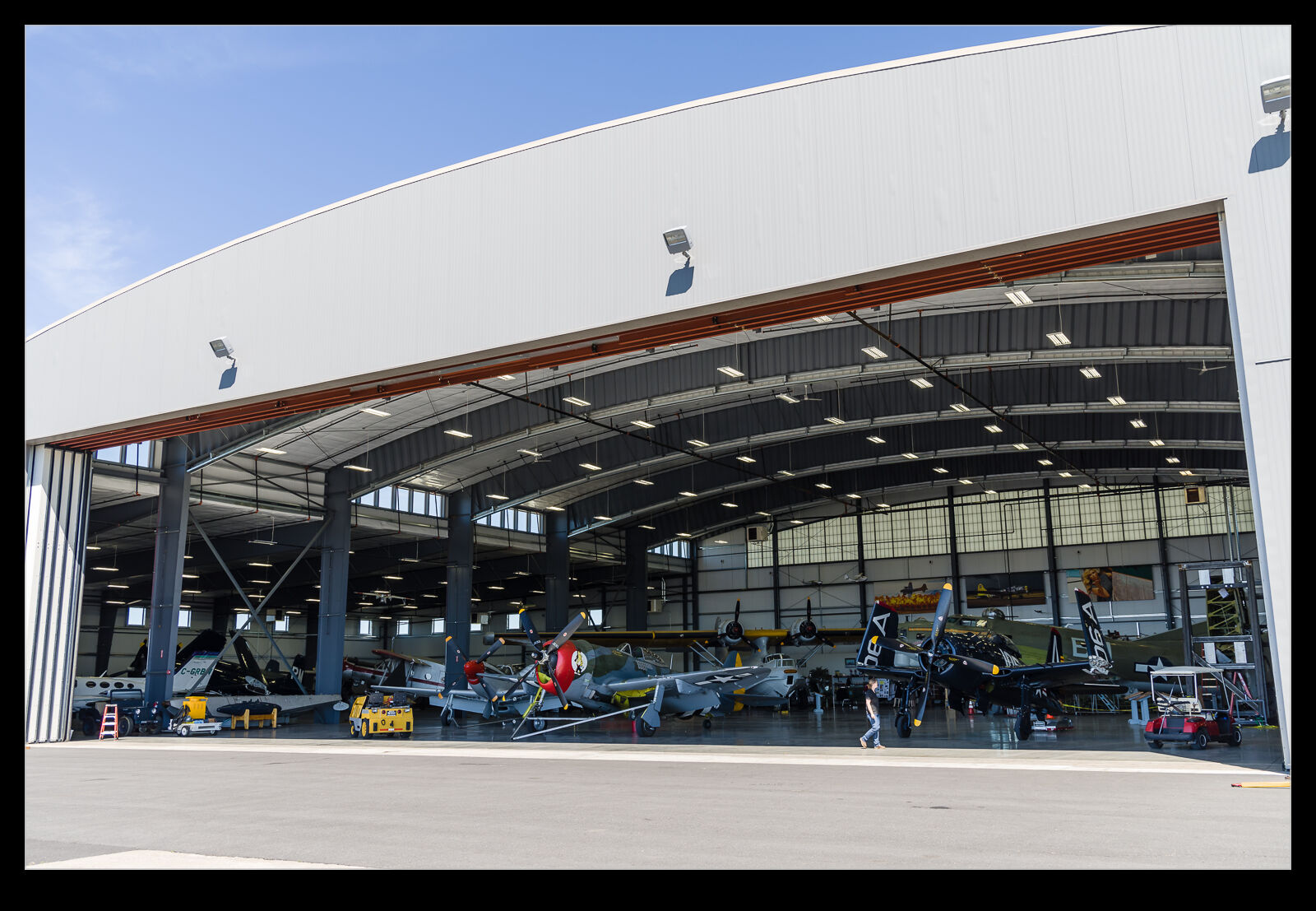 We didn’t have a huge amount of time available to spend at the museum but we had enough to get a reasonable look around. They were busy preparing aircraft since they were taking a few planes to the show at Klamath Falls that we were going to see. As a result, some of the planes were either out on the ramp or at the front of the hangar being prepped for their ferry south.
We didn’t have a huge amount of time available to spend at the museum but we had enough to get a reasonable look around. They were busy preparing aircraft since they were taking a few planes to the show at Klamath Falls that we were going to see. As a result, some of the planes were either out on the ramp or at the front of the hangar being prepped for their ferry south.
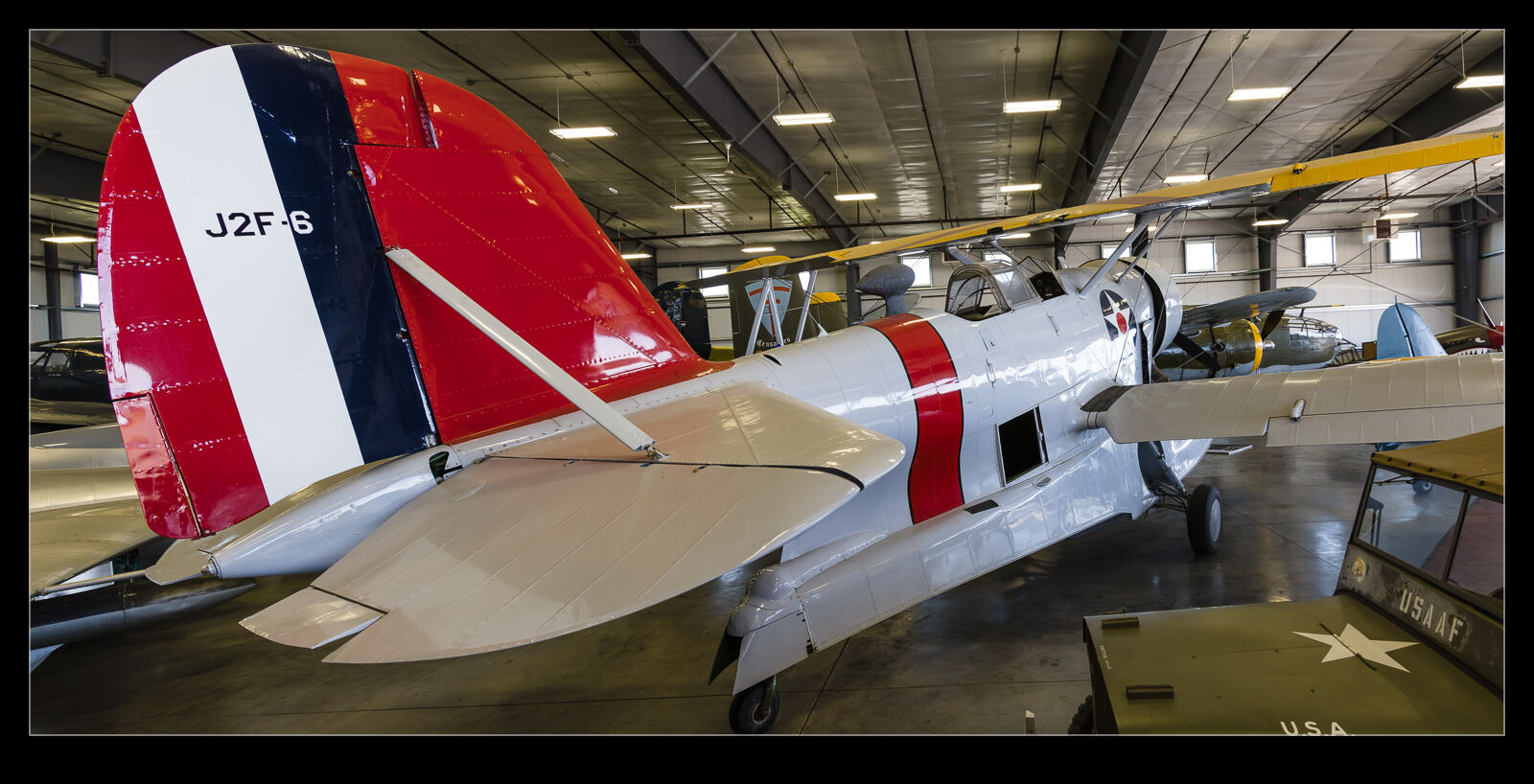 There seemed to be more planes than I remembered from my previous trip and things were definitely squeezed in. Of course, it might just be my memory not being up to par. The more unusual types like the Bellanca or the Mauler are always worth a look but everything in the collection looks great.
There seemed to be more planes than I remembered from my previous trip and things were definitely squeezed in. Of course, it might just be my memory not being up to par. The more unusual types like the Bellanca or the Mauler are always worth a look but everything in the collection looks great.
Hood River Museum
 The Oregon trip with Mark provided a lot of options for additional aviation experiences while we were en route to the main event in Klamath Falls. This included a stop off at Hood River to check out the museum there. I had heard that it was an impressive collection of both planes and cars and that was no understatement. When it comes to older aircraft, I am well out of my depth. My interest in aviation came out of the military side of things in the 80s and the era of WWII and before was not something I paid any attention to.
The Oregon trip with Mark provided a lot of options for additional aviation experiences while we were en route to the main event in Klamath Falls. This included a stop off at Hood River to check out the museum there. I had heard that it was an impressive collection of both planes and cars and that was no understatement. When it comes to older aircraft, I am well out of my depth. My interest in aviation came out of the military side of things in the 80s and the era of WWII and before was not something I paid any attention to.
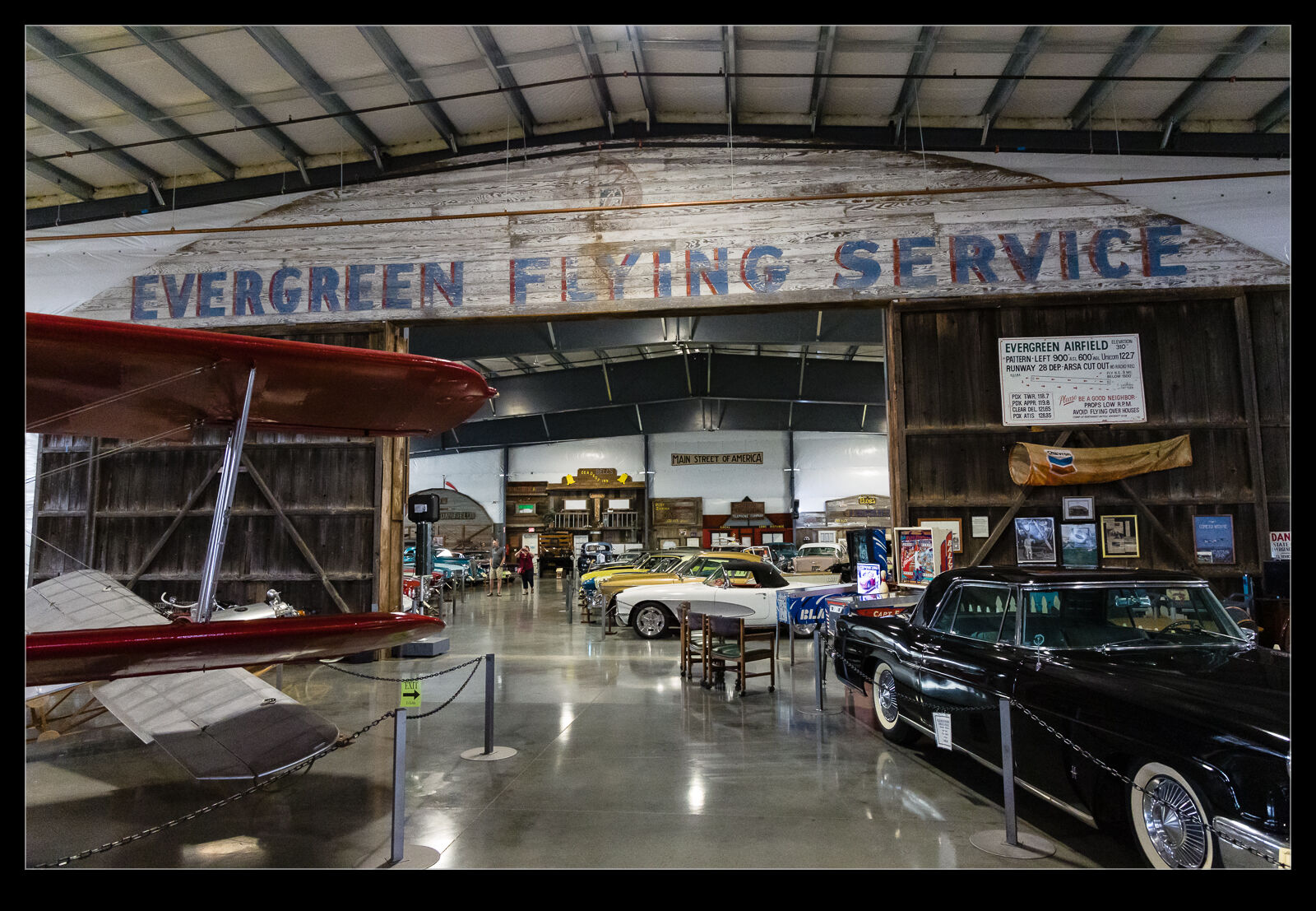 The result of this is that a museum like Hood River is full of aircraft that I know nothing about. I couldn’t identify many of them if asked and, when there are many variants of a given make, I don’t recognize what distinguishes them and whether one or other of them is significantly rarer than any other. Instead, I just find it interesting to look at the wide variety of looks and finishes that the planes have.
The result of this is that a museum like Hood River is full of aircraft that I know nothing about. I couldn’t identify many of them if asked and, when there are many variants of a given make, I don’t recognize what distinguishes them and whether one or other of them is significantly rarer than any other. Instead, I just find it interesting to look at the wide variety of looks and finishes that the planes have.
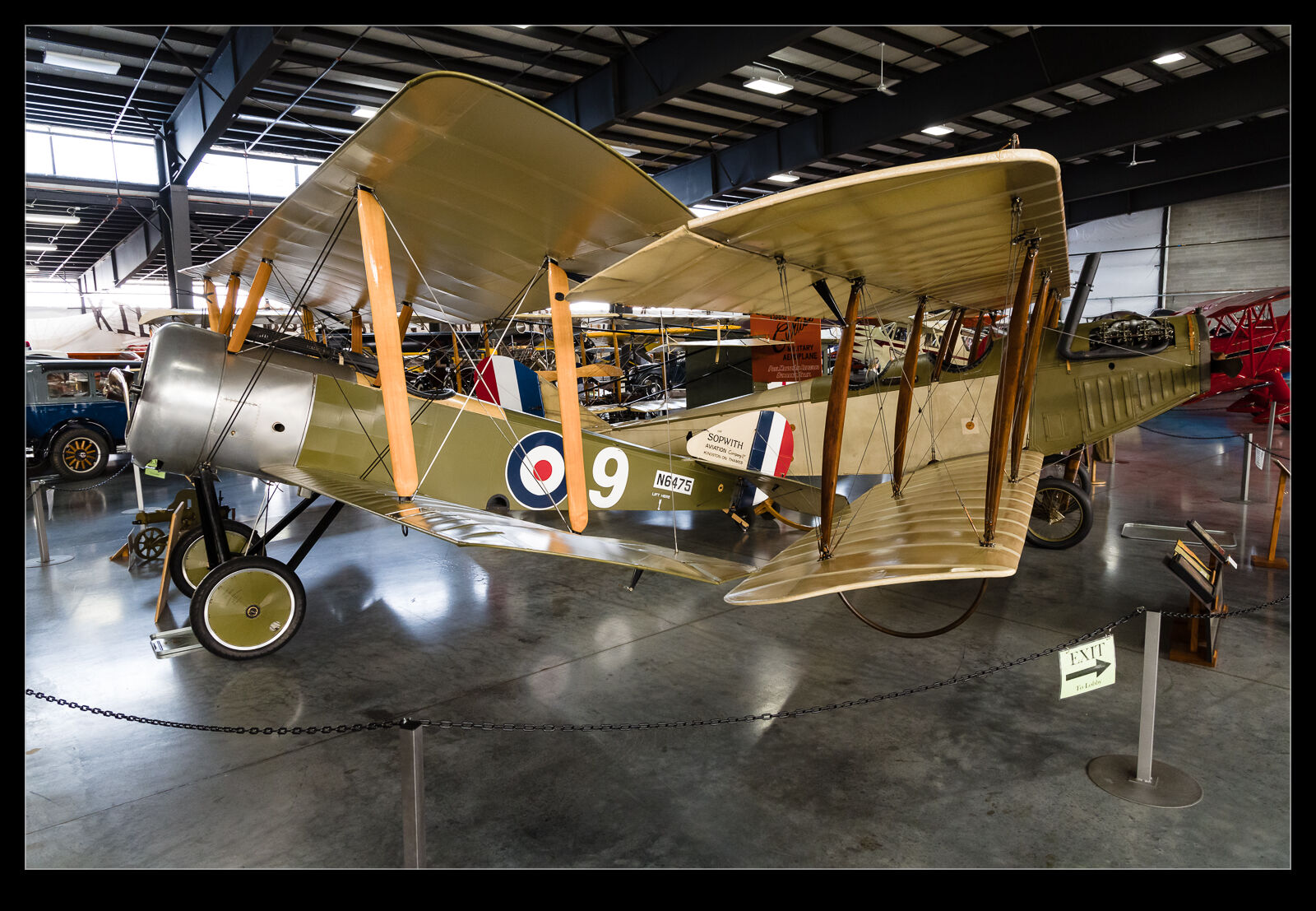 The Hood River museum certainly provides me plenty to choose from in that regard. There are so many aircraft in there and, while they have several hangars, it is not unfair to say that things are pretty on top of each other in order to get everything to fit in. It is also a little dark but, since modern cameras are so good in low light conditions, this isn’t really a problem anymore.
The Hood River museum certainly provides me plenty to choose from in that regard. There are so many aircraft in there and, while they have several hangars, it is not unfair to say that things are pretty on top of each other in order to get everything to fit in. It is also a little dark but, since modern cameras are so good in low light conditions, this isn’t really a problem anymore.
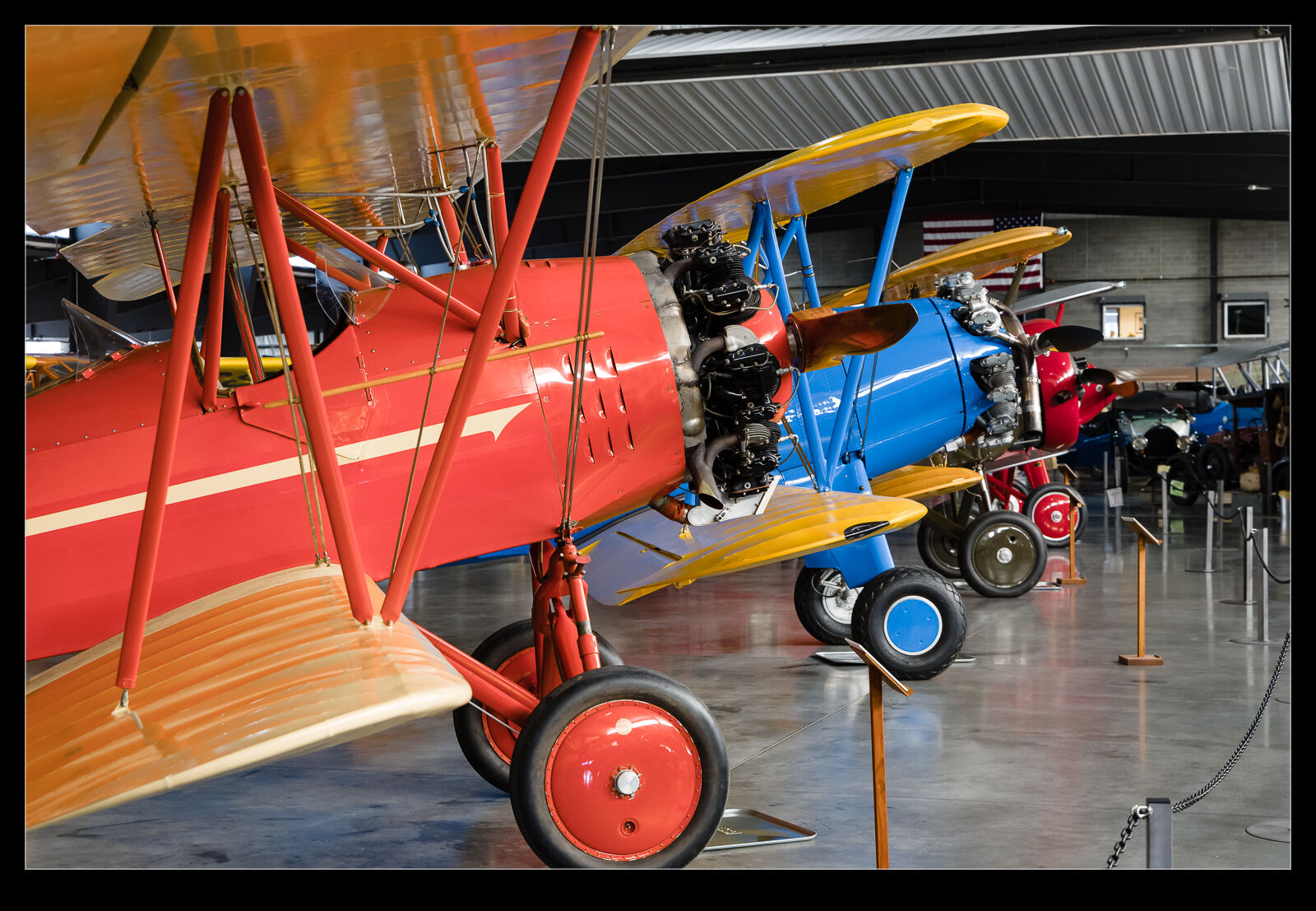 Mark and I are both plane guys so the car collection was not a big focus for us. We did take a look at to some of the vehicles that were there but, since we had a schedule to keep if we were to get to Klamath Falls in time for some dinner, we had to focus on the planes. There is no way I could cover the collection in one blog post and I won’t even try. Instead, I shall provide a tiny selection of what we saw. Maybe, as I work through some of the shots, I shall revisit the collection in some future posts.
Mark and I are both plane guys so the car collection was not a big focus for us. We did take a look at to some of the vehicles that were there but, since we had a schedule to keep if we were to get to Klamath Falls in time for some dinner, we had to focus on the planes. There is no way I could cover the collection in one blog post and I won’t even try. Instead, I shall provide a tiny selection of what we saw. Maybe, as I work through some of the shots, I shall revisit the collection in some future posts.
CF-100 Canucks in Museums
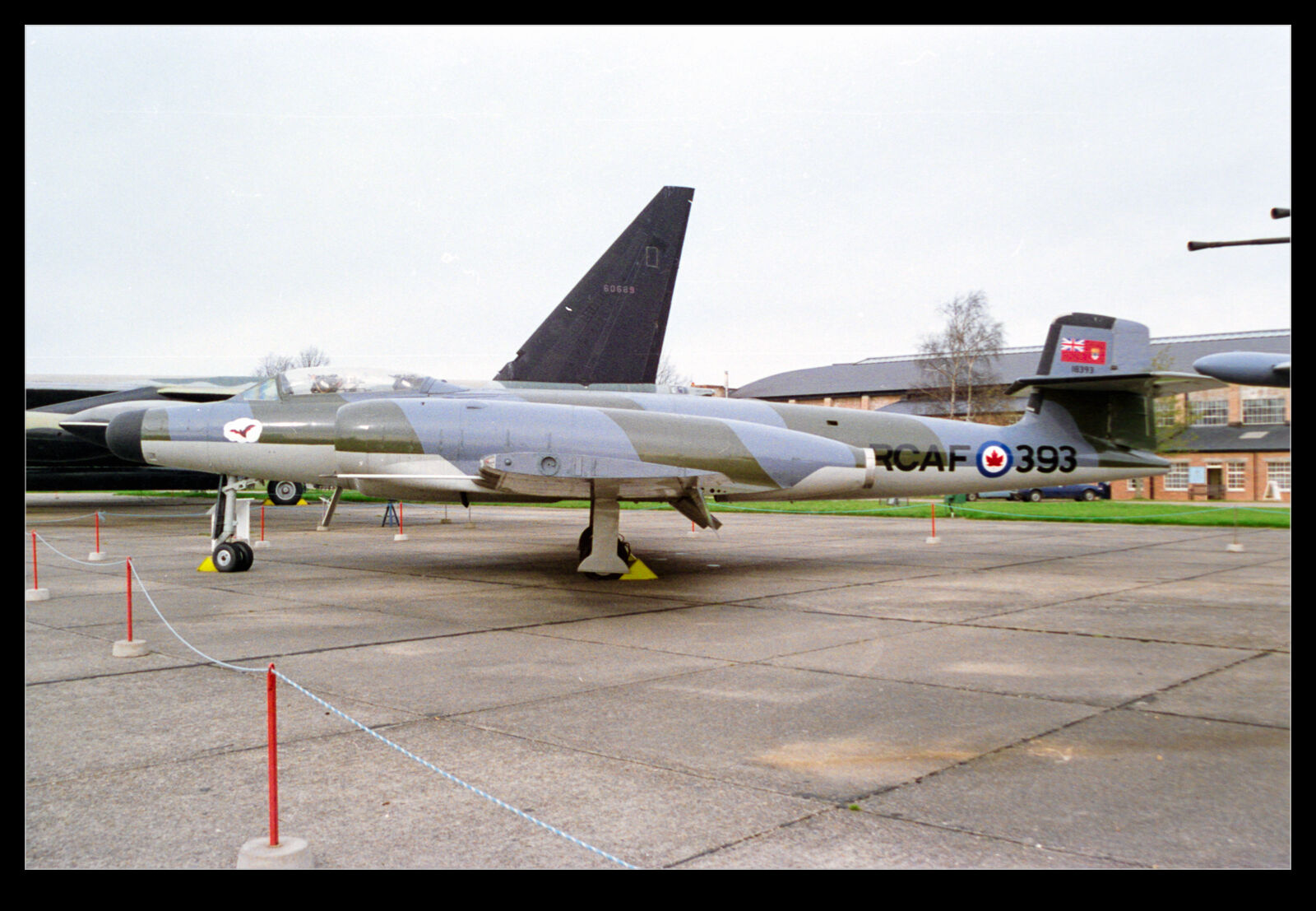 I can’t recall what prompted all of this but I found myself searching through my photos to see if I had any pictures of Avro Canada CF-100 Canucks. I knew I had seen one at the Imperial War Museum at Duxford but had I seen any others? I had been looking at the Wikipedia article on them as part of this theme and had seen where the remaining examples are. Turns out I had also seen one in Castle AFB museum. It’s a curious looking type but here are some shots including the IWM example from thirty years ago as well as last year.
I can’t recall what prompted all of this but I found myself searching through my photos to see if I had any pictures of Avro Canada CF-100 Canucks. I knew I had seen one at the Imperial War Museum at Duxford but had I seen any others? I had been looking at the Wikipedia article on them as part of this theme and had seen where the remaining examples are. Turns out I had also seen one in Castle AFB museum. It’s a curious looking type but here are some shots including the IWM example from thirty years ago as well as last year.
